Safe and Clean
In August of 2021, we spent an extended week in Mexico City walking through history, absorbing its beauty and indulging in the local cuisine. With our children, ages thirteen and eight, and as seasoned New Yorkers, we took full advantage of all that Mexico City has to offer. While it is necessary to be on guard and exercise commonsense precautions in Mexico City, as one would in New York City, we felt completely at ease.
In addition to being surrounded by visible layers of history spanning centuries, public art, and streets lined with trees, Mexico City is an exceptionally clean city. The city sidewalks of Mexico City are litter-free, due to the noticeable presence of city workers maintaining an incredibly high standard of cleanliness at all hours. Furthermore, there are numerous well-maintained public bathrooms around most tourist sites that are open to the public for a very small fee.
Jump to the bottom of this post to read more about getting around, where to stay and where to eat.
Daily Itineraries
Mexico City is a sprawling city and it is not possible to casually wander from one neighborhood to the next on foot as one can in Manhattan. Like any major cultural capital, Mexico City is jam-packed with endless things to see and taste, so much so that in our opinion, it warrants multiple visits. In fact, we returned in April of 2022 to revisit restaurants that we fell in love with, try out others that we did not get to the first time around and check out sites that were either temporarily closed due to the pandemic or we simply did not have to see our first time around. We loved our time so much that we went back the following April. Click here to read more about our second trip to Mexico City.
Here’s how we organized our days that made for an exhilarating but not overwhelming experience for our family. A minimum of a five day stay in Mexico City is ideal but this basic outline can either be expanded or condensed depending on one’s preferences.
Day 1:Tlatelolco,Shrine of Our Lady of Guadalupe &Teotihuacan. The best and most efficient way to see all three of these sites in one day is to hire a private driver. It is always a good idea to plan excursions early on just in case it has to be rescheduled due to weather or other extenuating circumstance. A fluid schedule allows for changes along the way that are almost always inevitable.
Day 2: Centro Histórico – Zócalo, National Palace,Templo Mayor,Metropolitan Cathedral, Avenue Francisco Madero,Palacio de Bellas Artes,Palacio Postal,Museo Nacional De Arte (MUNAL), and La Casa de los Azulejos (House of Tiles). Click here for a more detailed post about Centro Histórico.
Day 3:Coyoacán –Museo Frida Kahlo (Casa Azul) andMuseo Anahuacalli. If time permits, Juan O’Gorman’s monumental murals, “A Historical Representation of the Culture” (Representación histórica de la cultura), on the campus library of the National Autonomous University of Mexico (UNAM). Otherwise, plan to visit this campus on a separate day.
Day 4: Bosque de Chapultepec –Museo Nacional de Antropología and The Museum of Natural History in Chapultepec Castle. It is ideal to see these museums on separate days but if you are pressed for time go to the Museo Nacional de Antropología as soon as they open at 9:00 am so there is time to stop by the castle before it closes at 5:00 pm.
Day 5:Floating Gardens of Xochimilco followed by lunch atArroyo Restaurant. The UNAM campus visit is also possible on this day.
Day 6: Polanco – Museo Soumaya and Museo Jumex. Do not prioritize either of these museums.
Mexico City By Neighborhood
Centro Histórico –Zócalo
National Palace, Templo Mayor, Metropolitan Cathedral
The Zócalo is the heart and historical center of Mexico City. Always festive to experience at street level or from one of the many rooftop restaurants, cafes or bars, theZócalo is not to be missed. Running along the eastern side of the central square is the National Palace, a building that dates back to 1522, following the Spanish conquest of the Aztec Empire. The Spanish built their new capitol directly on top of the Aztec city Tenochtitlán. Just steps away from the palace are the remains of the Aztec Temple Mayor, or Great Temple, discovered in the late 1970s. Looking at the remains of Tenochtitlán alongside the National Palace and the Metropolitan Cathedral, also built just after the conquest, is history in the round. This spots marks the climatic and fateful showdown between the Aztecs and Spanish 500 years ago, the aftershocks of which can still be felt today.
Inside the National Palace is The History of Mexico mural by the artist Diego Rivera. He is famously known as Frida Kahlo’s husband as well as one of the three great muralists of Mexico. Rivera used these walls to showcase the history of the nation, from the Aztec era through the conquest to the Revolution and onto the development of industry. This is just one of the many places to experience the grand tradition of murals that flourished across Mexico City during the first half of the twentieth century. Temple Mayor can be viewed from various platforms that are open to the general public strolling through but there is a museum on-site for those seeking a more in-depth look at the remains. The cathedral is also open to the public and is absolutely worth a visit.
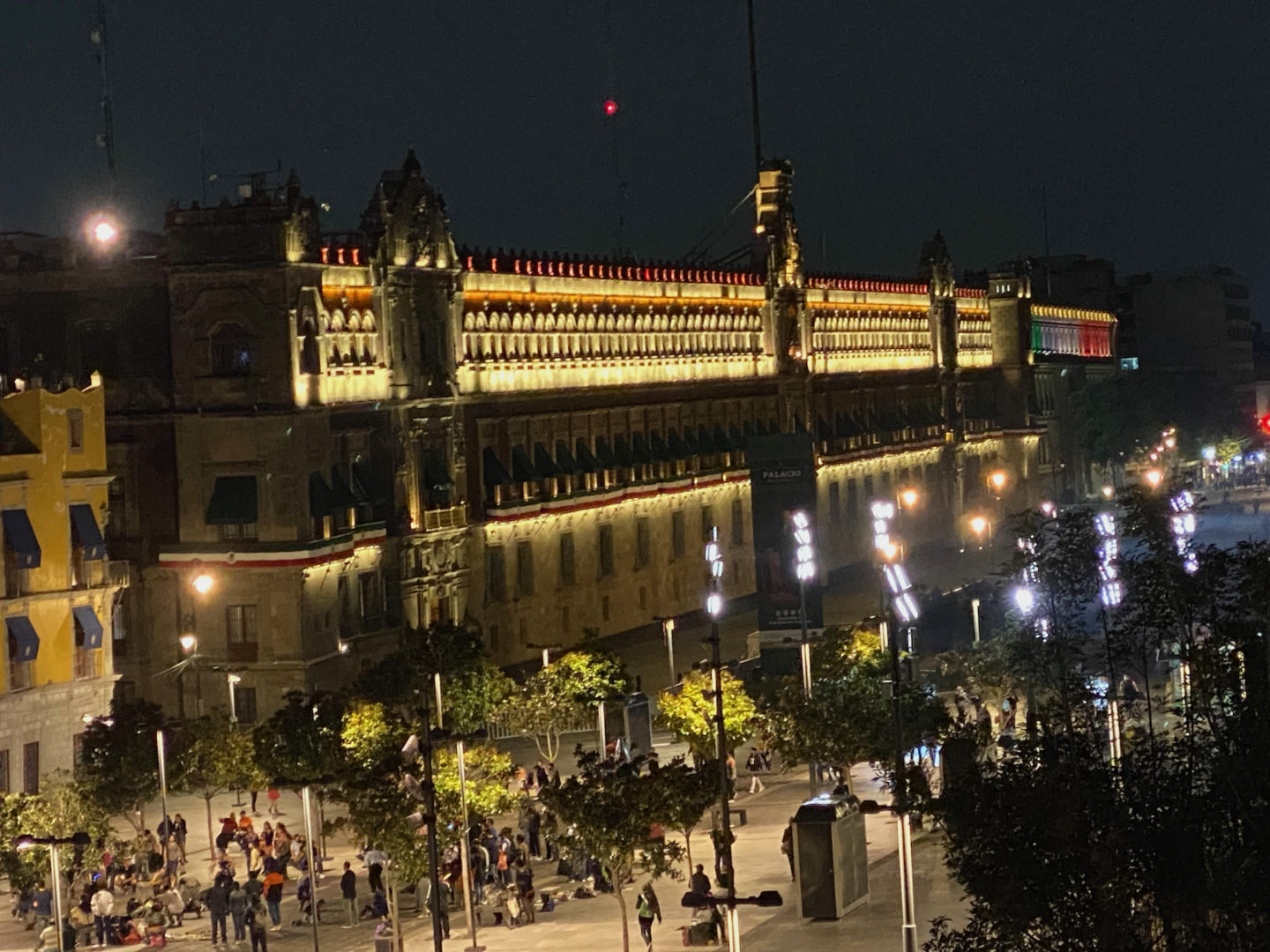
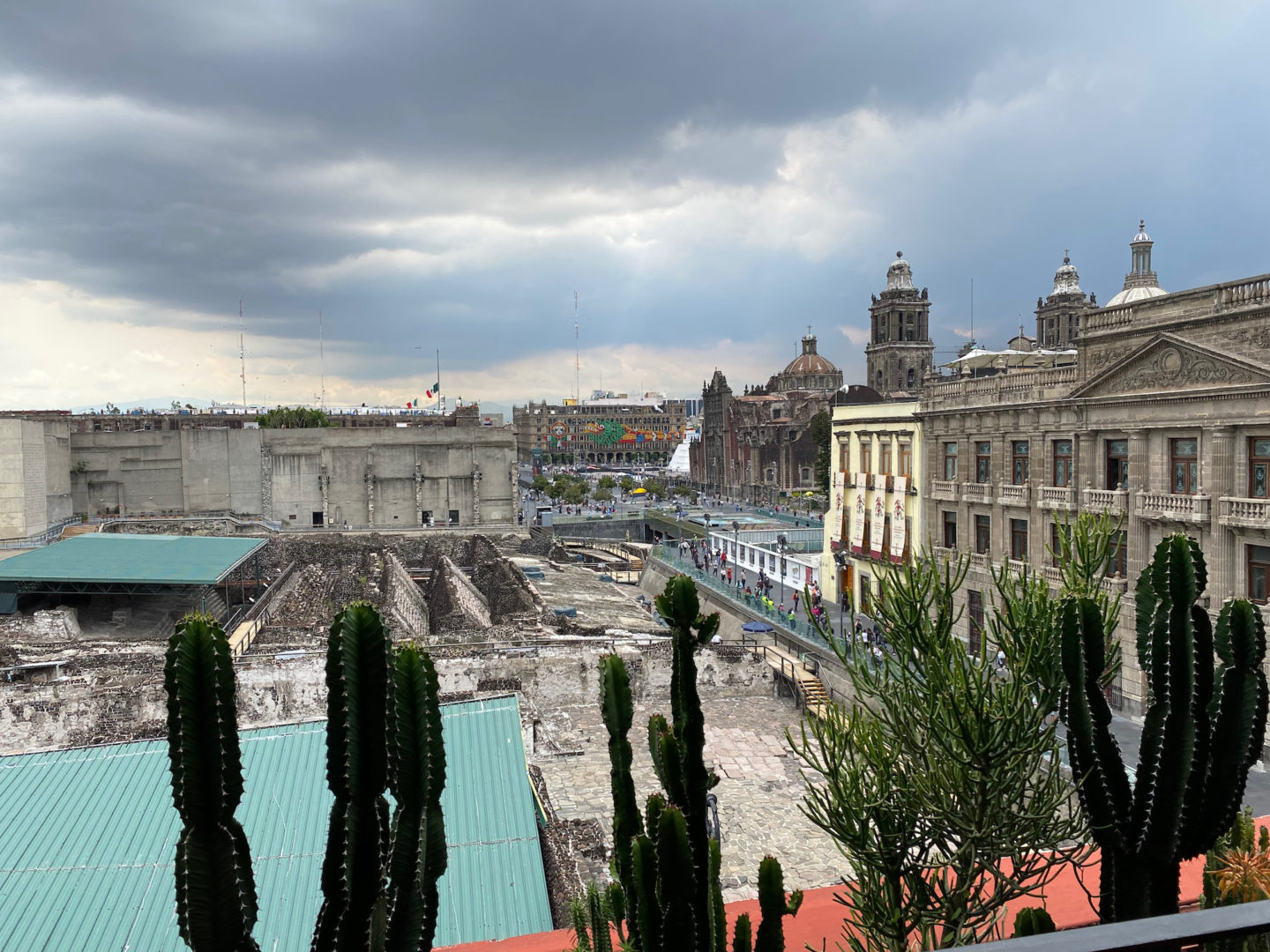
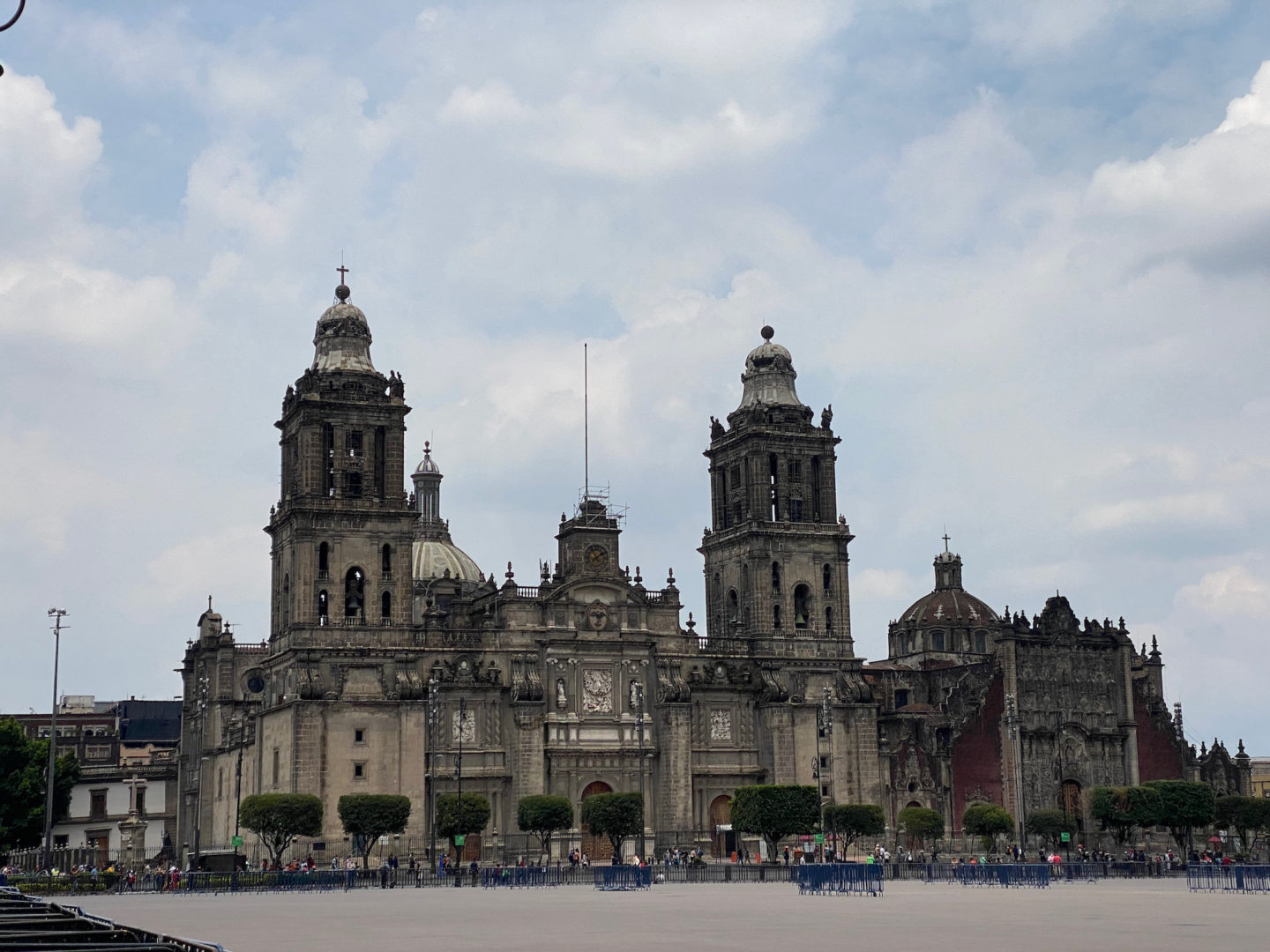
Palacio de Bellas Artes, Palacio Postal, Museo Nacional De Arte (MUNAL)
Just a short walk along the pedestrian-only Avenue Francisco Madero from theZócalo is the Palacio de Bellas Artes. This Art Nouveau building was completed in 1934 and although it is a performance space, it is also the place to see iconic murals by Diego Rivera, David Alfaro Siqueiros, José Clemente Orozco, Rufino Tamayo and Jorge González Camarena. After spending some time with these murals, cross the street and take a look inside another palace, that is inside the Palacio Postal, also known as the “Correo Mayor.” Built in 1907, this palatial governmental institutions continues to serve its original function but also welcomes tourists to walk through and appreciate this beautifully preserved building that grandly occupies the corner of a block. The Museo Nacional De Arte (MUNAL), located inside a Neoclassical building that was completed in 1911 as the Communications and Public Works Palace, is also just across the street from the post office. This museum was founded in 1982 and the works on view span the mid-sixteenth century through the mid-twentieth century. These closely situated buildings, all palaces, are testament to Mexico City’s grandeur around the turn of the twentieth century.
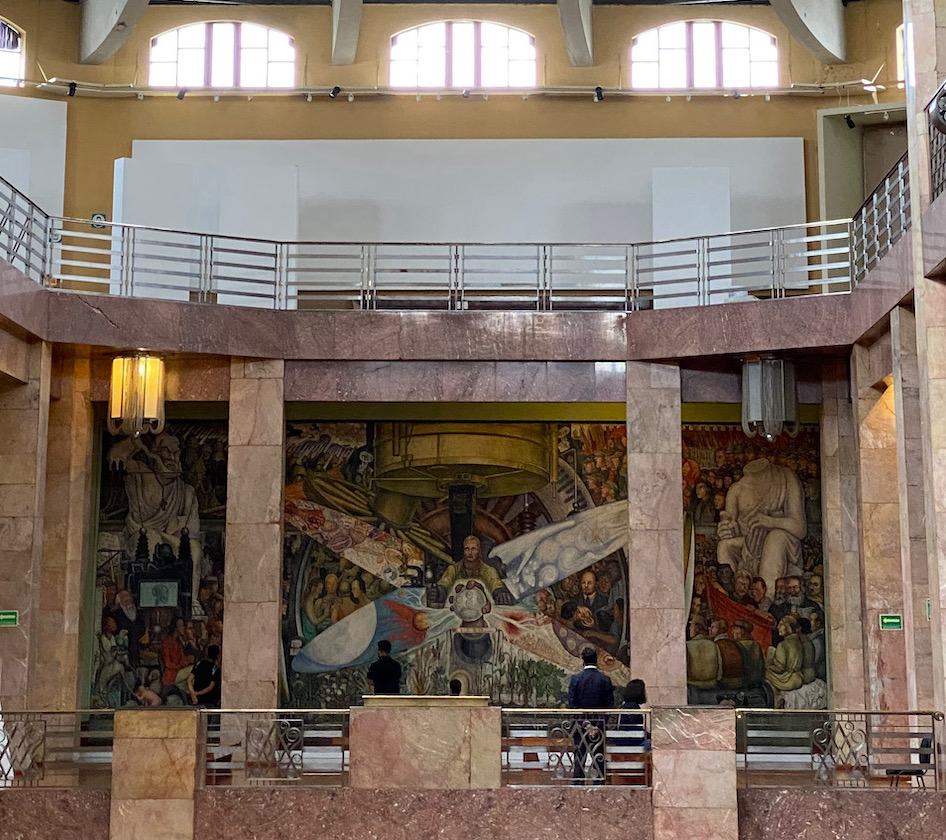
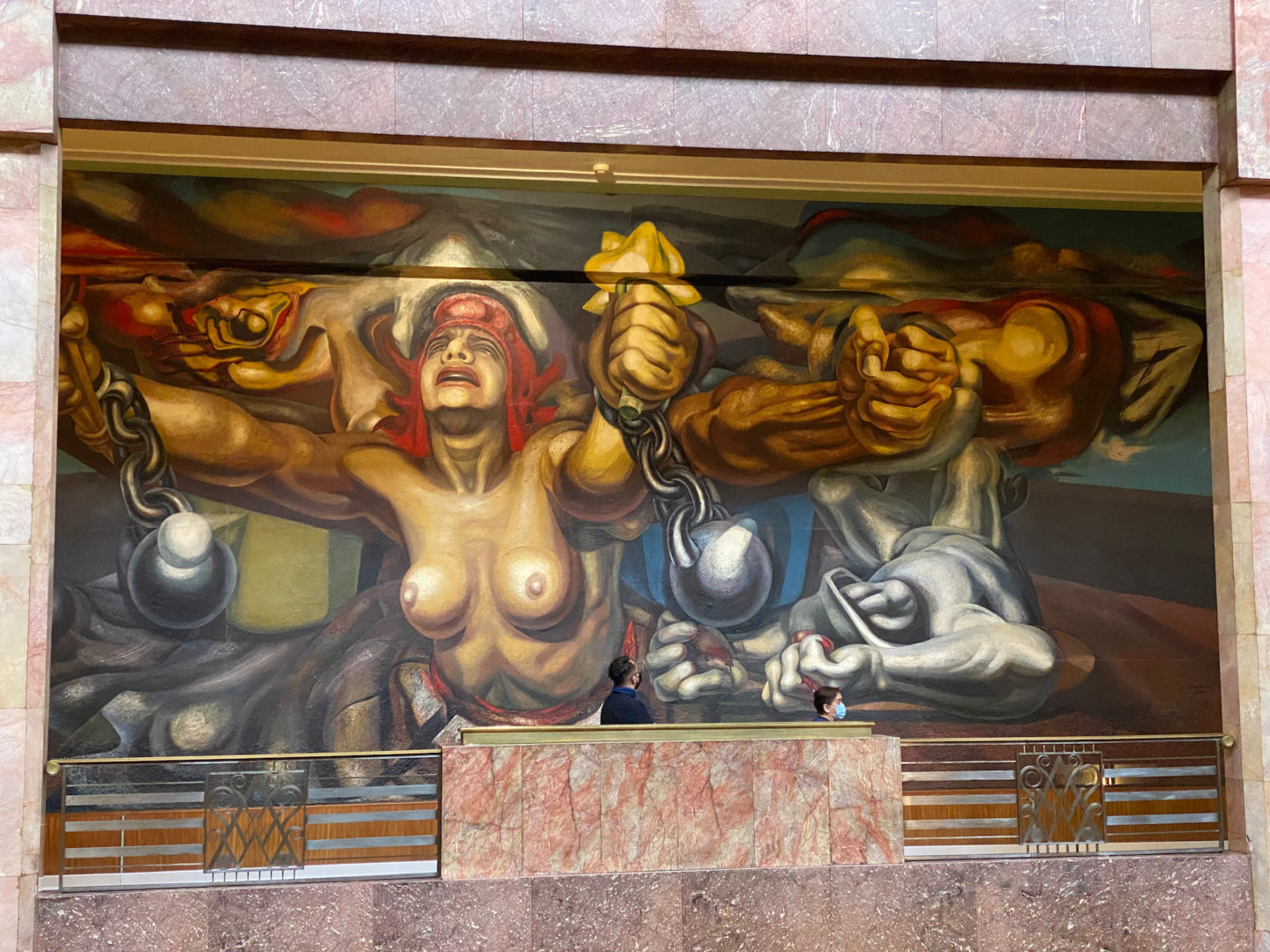
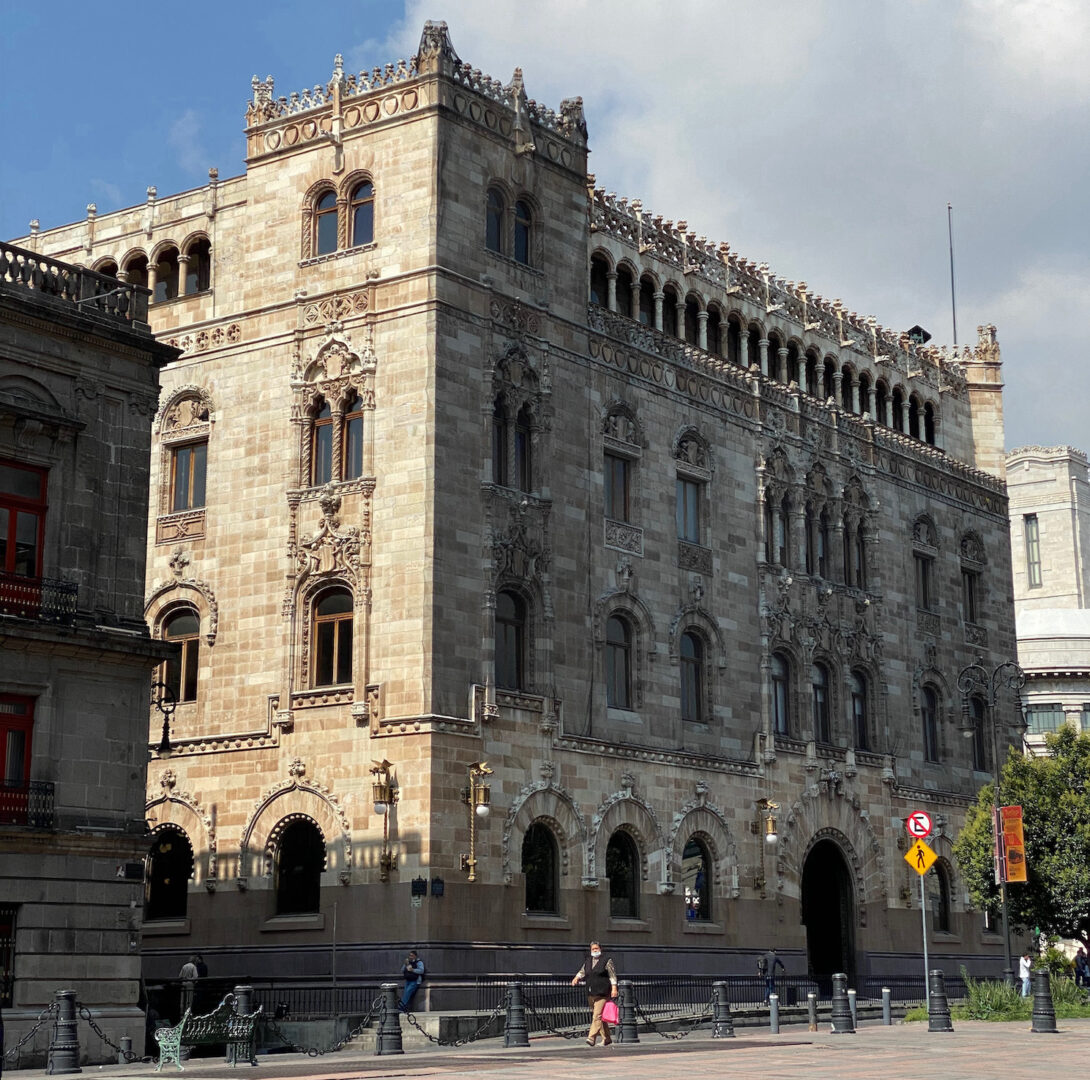
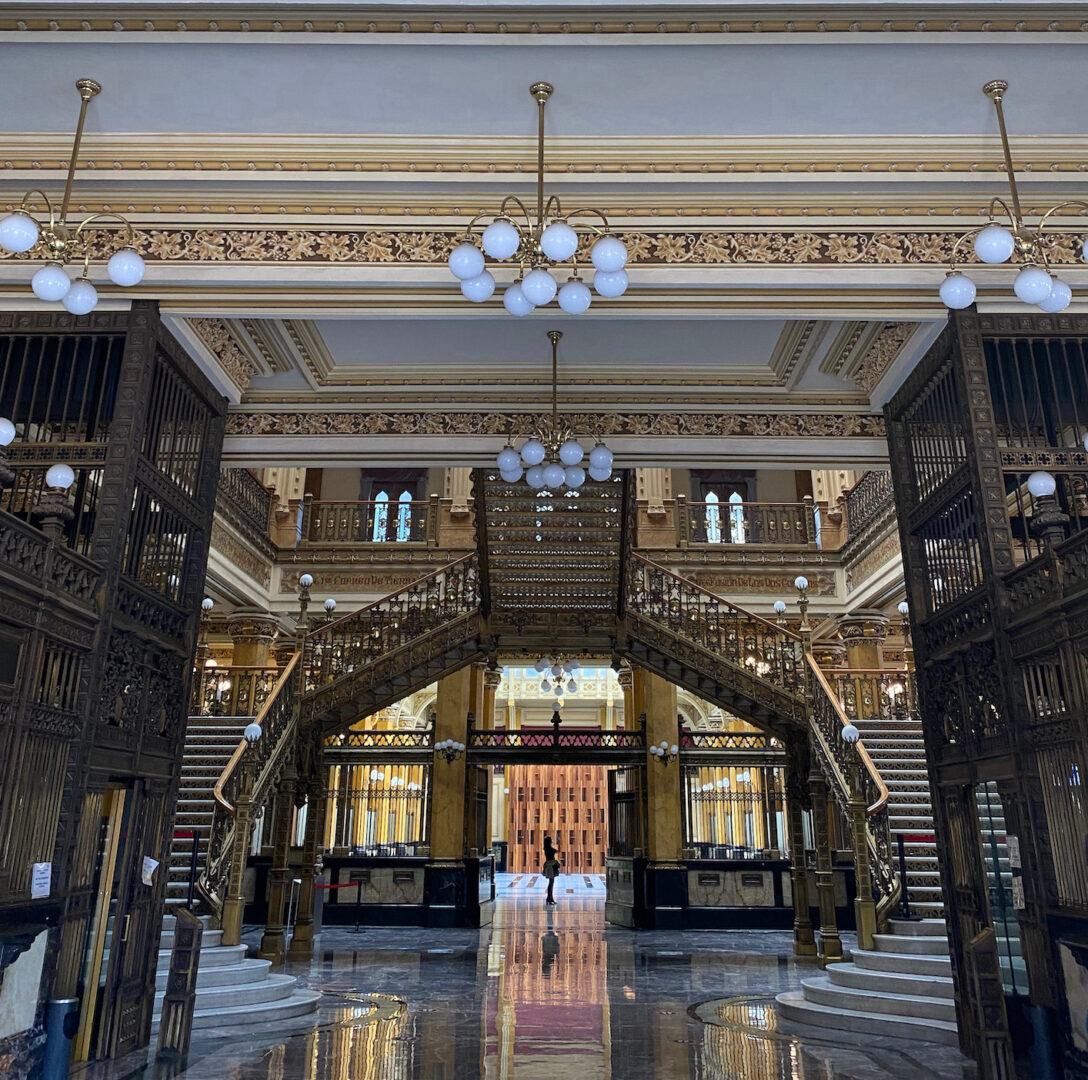

Bosque de Chapultepec
Museo Nacional de Antropología
Bosque de Chapultepec is the Central Park of Mexico City – it is massive and home to a number of prominent institutions. Museo Nacional de Antropología is the largest and most prominent museum of Mexico City. Opened in 1964, this museum is committed to the indigenous cultures of Mexico including the Aztecs, Mayans, Toltecs and other Native groups. The museum’s collection spans artifacts of all sizes, many of which are actual sections of temples installed in the outdoor spaces but also housed inside among galleries filled with objects demonstrating the intricate forms of production employed for utilitarian and spiritual purposes. An entire day could be devoted to this museum’s galleries that bring together archeological sites from various regions of Mexico.
This museum was unfortunately the target of a major theft in 1985, these events were the subject of the 2018 film Museo starring Gael García Bernal.
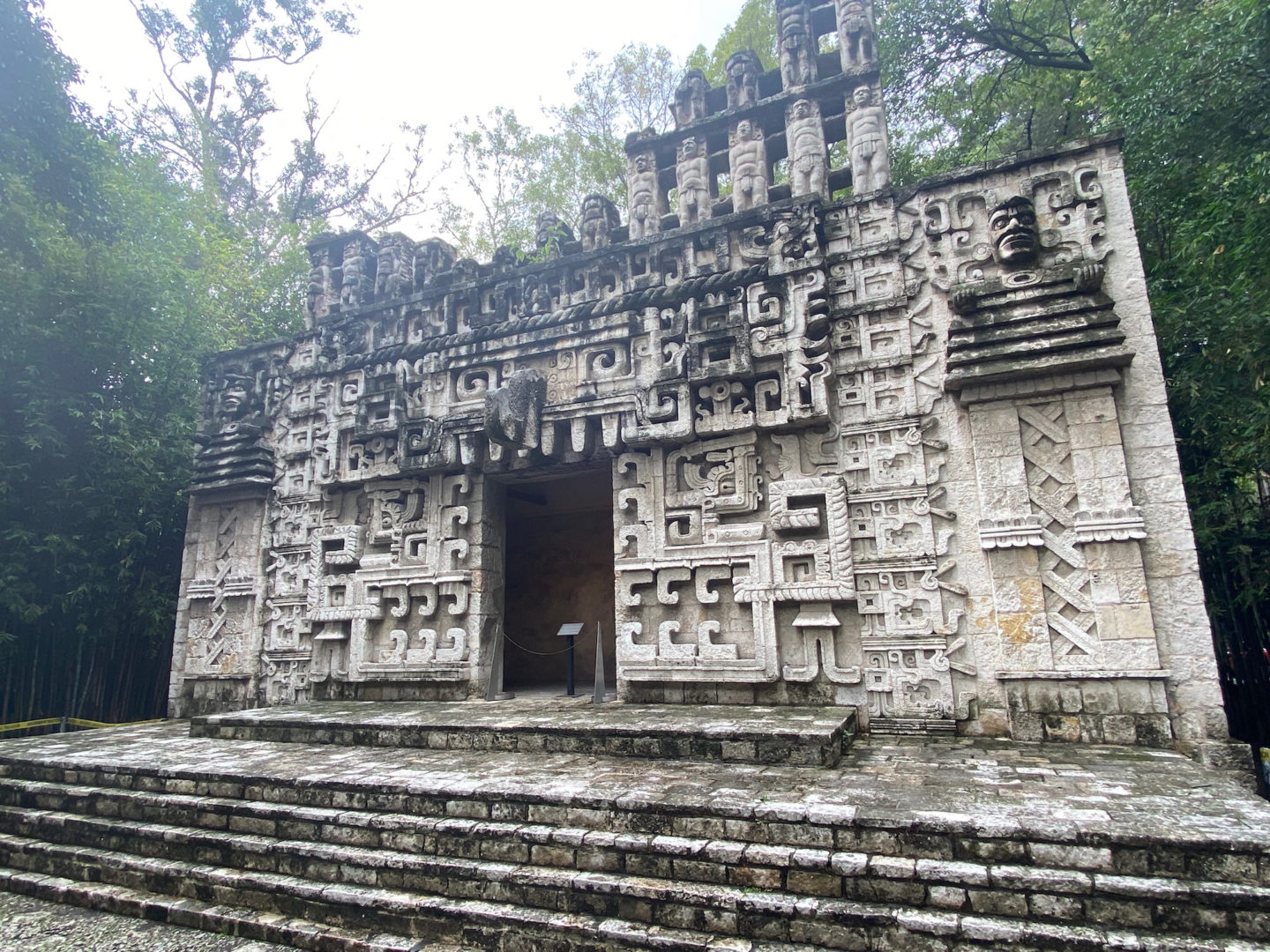

Chapultepec Castle
Chapultepec Park is also home to The Museum of Natural History inside Chapultepec Castle at the top of a hill and overlooking the city. In addition to the stunning views, inside the castle are a number of murals by the twentieth century masters including an entire room of by David Alfaro Siqueiros dedicated to the Mexican Revolution as well as other murals throughout by Juan O’Gorman, José Clemente Orozco, Jorge González Camarena, Gabriel Flores and Eduardo Solares showing other major moments of Mexican history. This museum’s collection covers the period of time from the conquest of Tenochtitlan through the Mexican Revolution (1910-1921). The castle was built in 1785 and served different purposes until it became this museum in 1939. The galleries take you through the fascinating twists and turns of Mexican history in ornate surroundings.
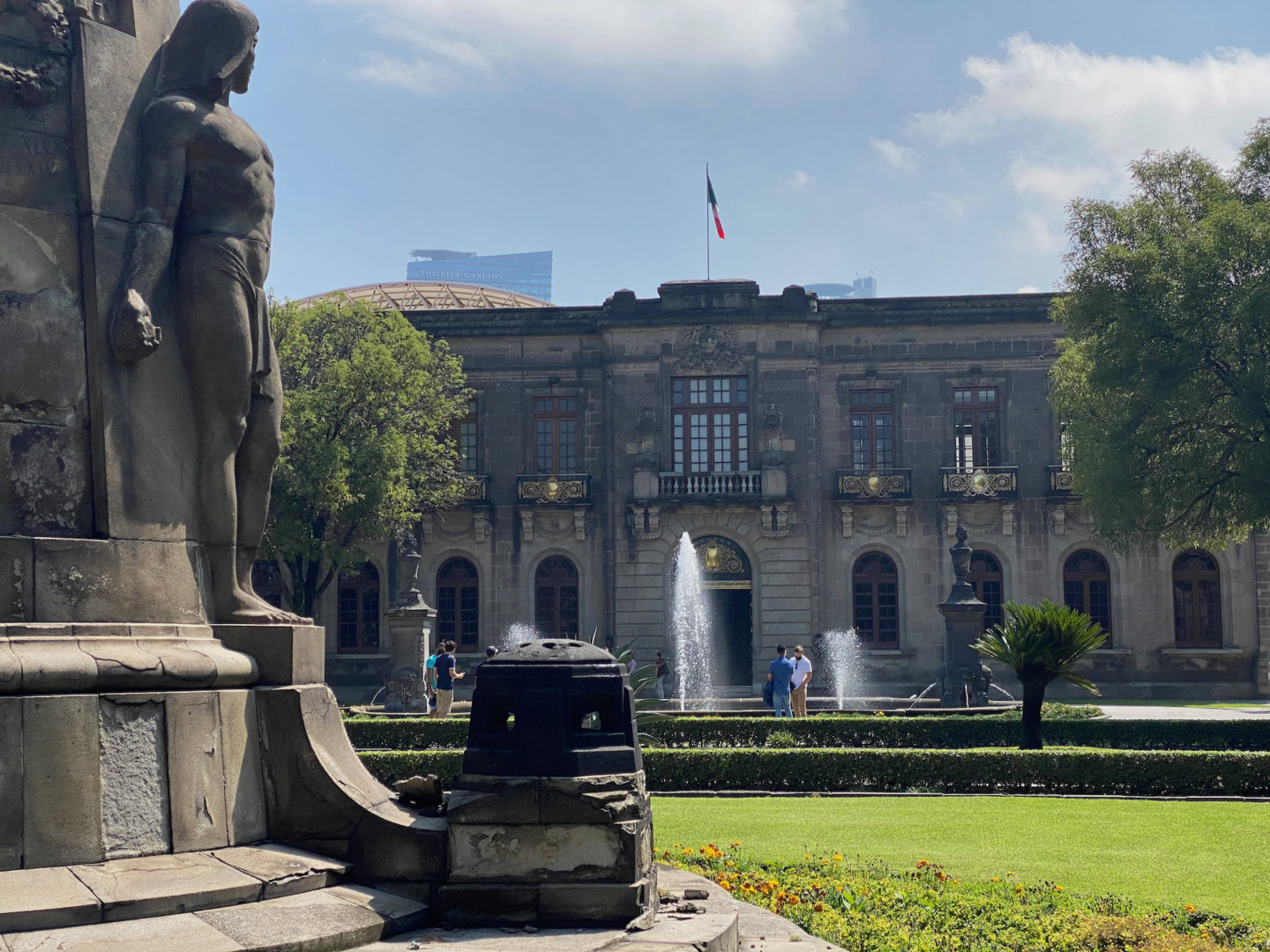

Coyoacán
Museo Frida Kahlo (Casa Azul)
A visit to Mexico City is incomplete without an afternoon spent in the home of Frida Kahlo (1907-1954), also know as the Casa Azul. The Museo Frida Kahlo was the childhood home of the artist but also her primary place of residence later in life and during her second go around as the wife of Diego Rivera. Their love story is epic and Kahlo is an international icon. Popular culture is saturated with Kahlo’s self-portraits, however, this space goes beyond, it is an intimate peek into Kahlo’s colorful and unconventional life that although tragic in some respects, was outrageous for a woman of her time. Due to popularity, this is the only museum that the purchase of tickets in advance are required. Try to do so at least a couple weeks prior to planned visit.
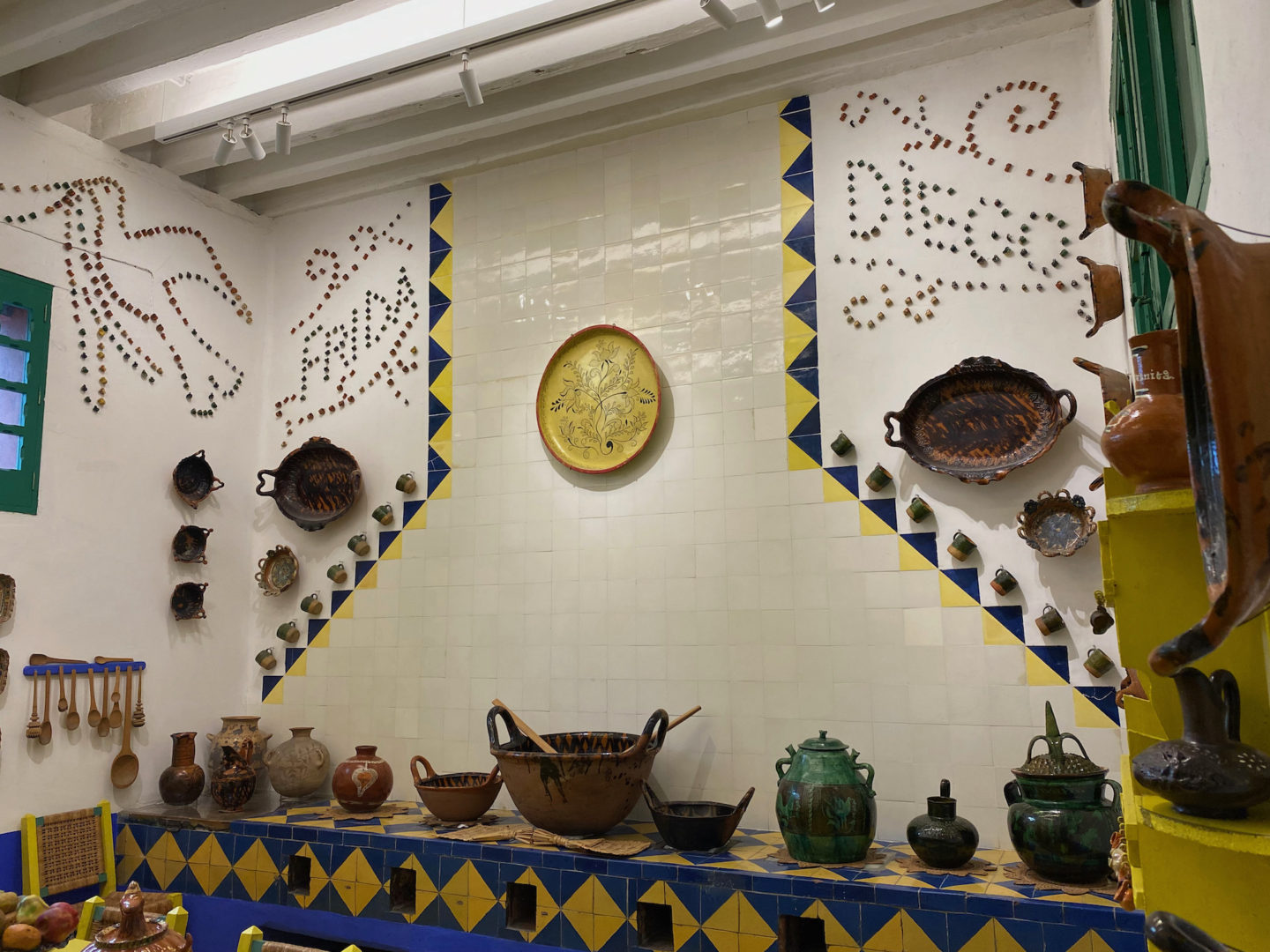
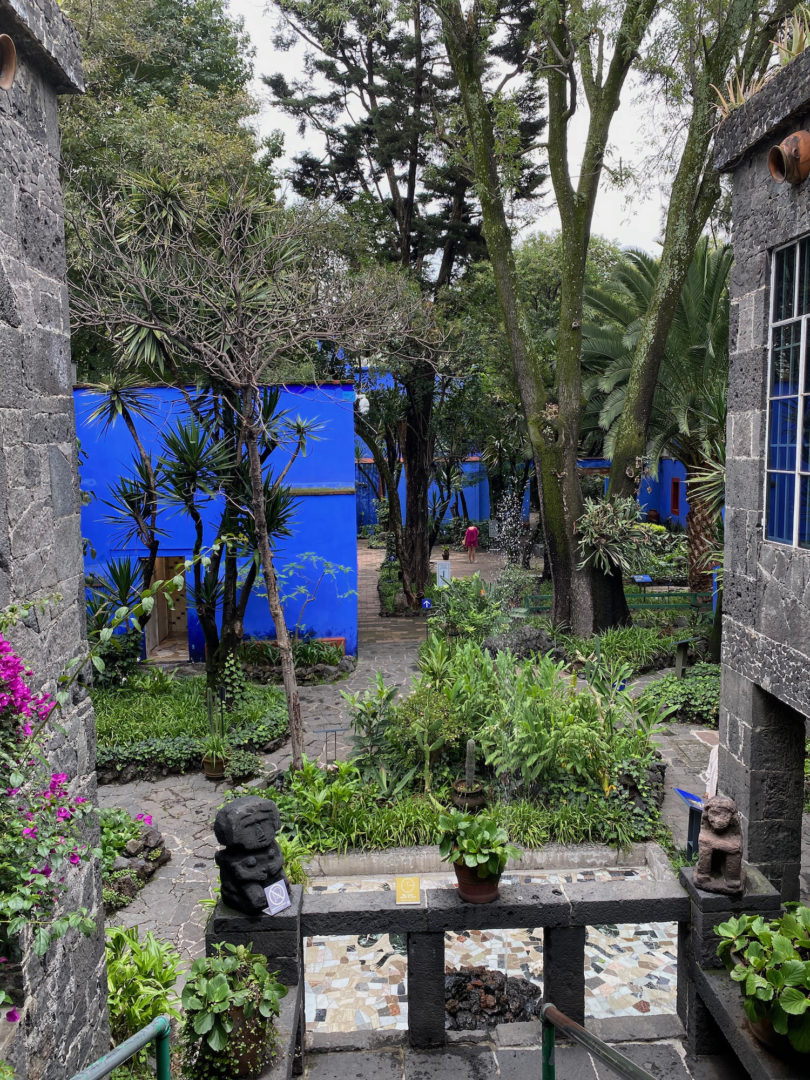
Museo Anahuacalli
Casa Azul shows the connection that Kahlo and Rivera had to the pre-colonial history of Mexico as seen in the number of pre-Hispanic objects displayed throughout the house. Kahlo was known for her preference to dress in a manner that honored the indigenous cultures of her homeland as was Rivera for his prominent collection of pre-Hispanic artifacts that led to the eventual founding of theMuseo Anahuacalli. Inspired by the architecture of Frank Lloyd Wright, realization of the Museo Anahuacalli began in the 1940s and completed in 1964, after the death of Rivera in 1957.
Envisioned as a City of Arts, Rivera and Kahlo purchased this property with the intention of creating a building complex consisting of a central pyramid surrounded by smaller structures. Today, the buildings of Museo Anahuacalli sit atop a hill just a short drive from Casa Azul. Upon passing through the entrance gate into the property, the museum building is the most prominent, its stone structure is a direct reference to pre-Columbian architecture. This legacy is replicated throughout the building in the choice of materials and forms. The walls, floors, and ceilings are covered with mosaics, objects are displays in niches that look as if they have been dug out of the walls and the dramatic lighting gives the impression of walking through a temple. The overall organic balance between the architecture and the objects is absolutely stunning. This museum is filled with unexpected and mind-blowing moments, every corner is picture-perfect.
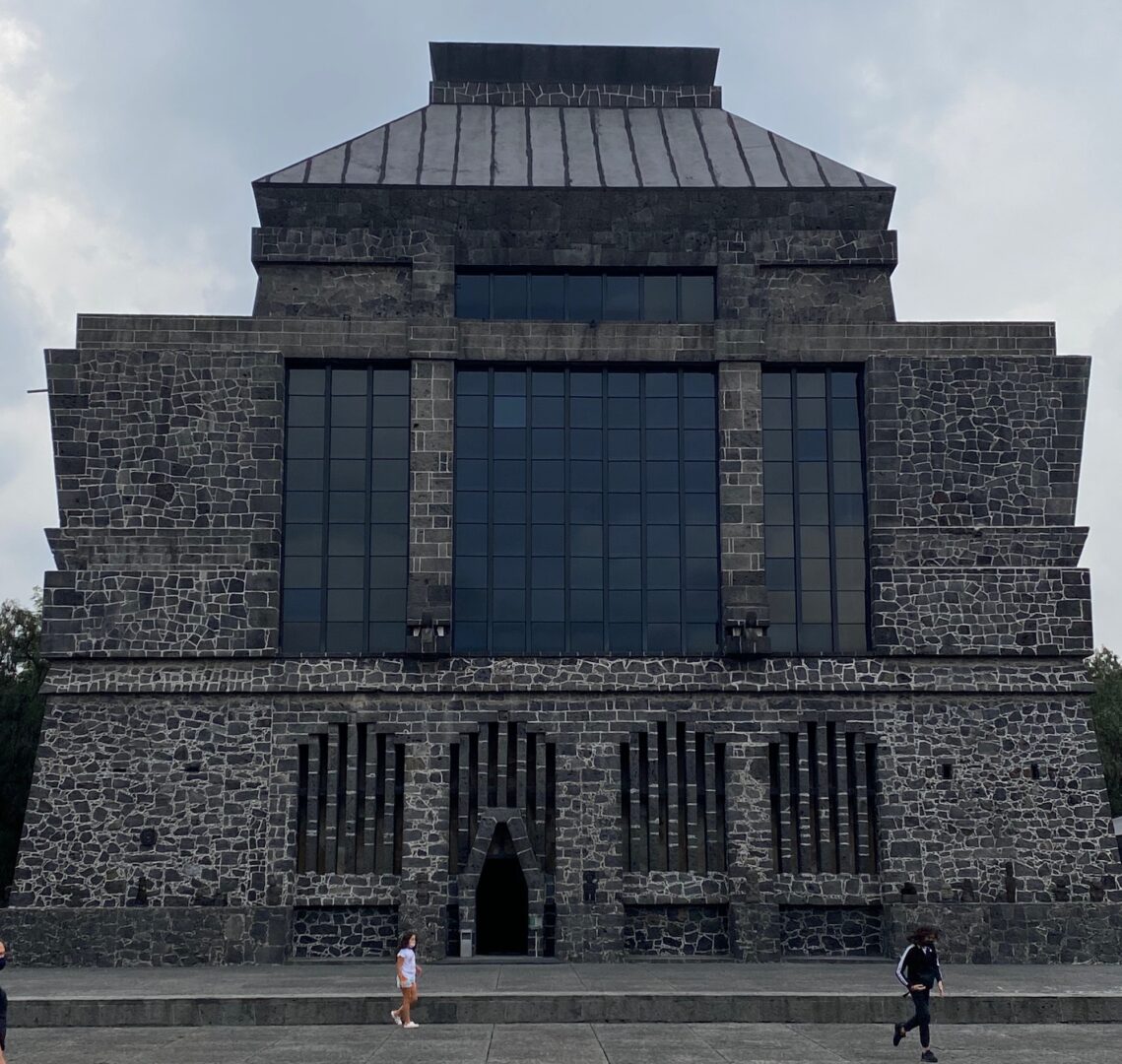

Polanco
Museo Soumaya & Museo Jumex
While in Mexico City, one will hear a lot chatter about the ritzy neighborhood of Polanco and witness the profound influence of the Carlos Slim financial empire over this city’s daily economy. This empire extends into the realm of art and culture, most notably with fairly new Museo Soumaya that opened in 2011 located in a square that is surrounded by high-rises also owned by Slim. For more about this museum and my thoughts on its questionable contribution to the local art scene, read this article. Also in this recently developed square is Museo Jumex, recently built for the art collection of the Jumex juice heir Eugenio López Alonso. These two museums are free to the public and despite the blandness of the surrounding neighborhood, make for a trendy meeting spot. I would not prioritize a visit to these museums but if you have extra time, they are worth checking out, even if just to appreciate the architecture.

Xochimilco
Floating Gardens of Xochimilco
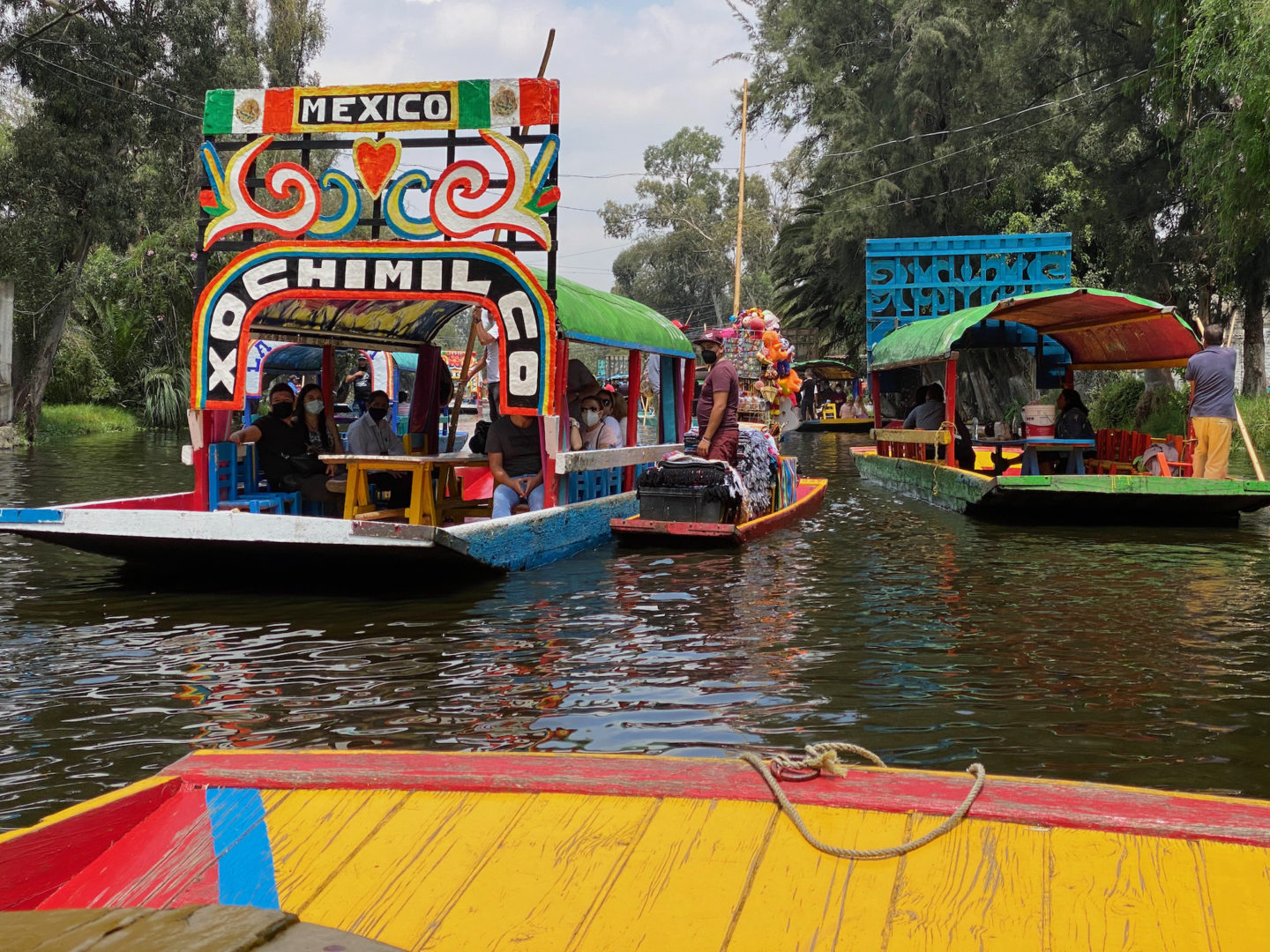
Further away from the city center are the magnificent Floating Gardens of Xochimilco, a system of canals dating back to the Aztec Empire. It is about a one hour drive to the floating gardens depending on traffic and the point of departure. At Xochimilco, there are plenty of brightly decorated boats for hire for any amount of time depending on one’s preference. Make sure to bring cash (Mexican pesos) to cover the rental fee but to also purchase food, drinks, souvenirs and musical accompaniment along the way. Groups can make the boat experience into a lavish party or, as in our case, a leisurely ride along the canals with some snacks and light entertainment. Each boat rental is private so your party does not have to share this experience with strangers. Once your gondola takes off with the gondolier at the helm, other boats selling food, beverages, goods and more will float over and give passengers the opportunity to purchase. It is a casual process that adds to the charm of gently floating around a centuries-old waterway system. As the name implies, there are floating gardens throughout as well as Isla de las Munecas (Island of Baby Dolls), a small area overrun with, as the name implies, old baby dolls, that is a little creepy but something to see in person. A day trip to Xochimilco is a must followed by a meal at the equally festive restaurant Arroyo, about 30 minutes drive from Xochimilco, for more traditional cuisine and entertainment.
Use this address for Ubers, taxis or private cars – Embarcadero Nuevo Nativitas, Calle del Mercado 133, San Jeronimo, Xochimilco 16420
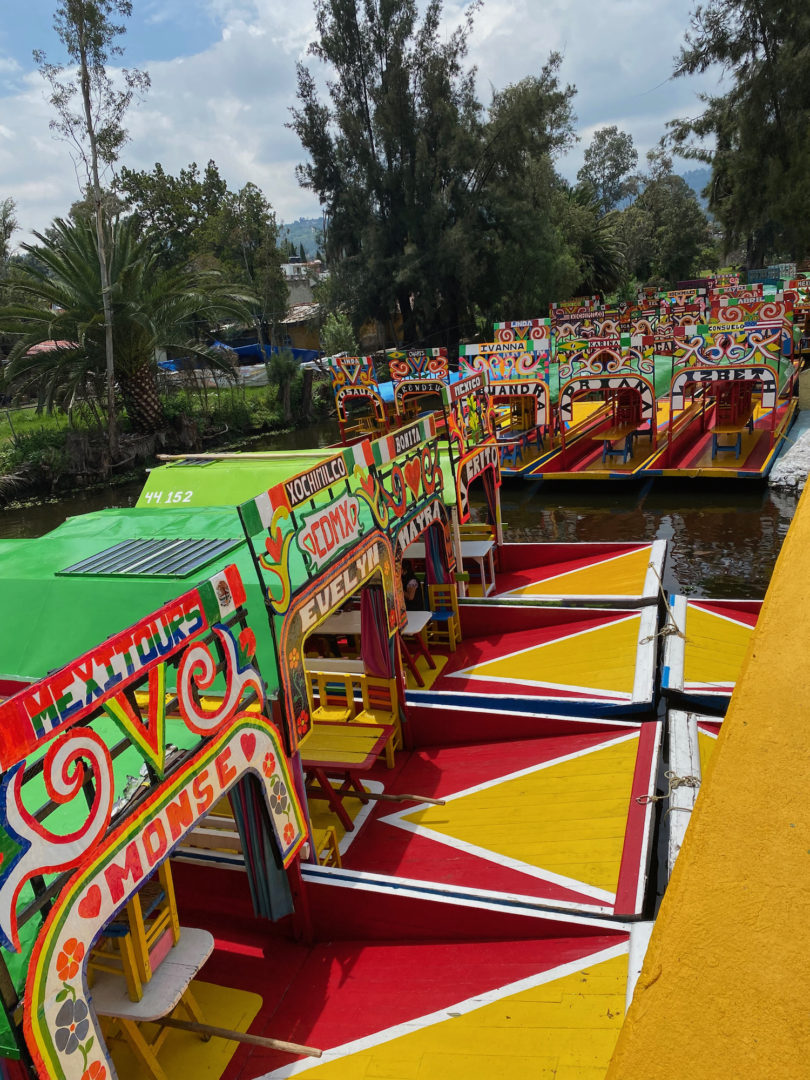

Tlatelolco
Plaza of the Three Cultures
Tlateloco, was the heart of the Aztec marketplace until the Spanish conquest in 1521. This location is known as the Plaza of the Three Cultures, referring to the ancient period as seen in the archaeological remains that continue to be an ongoing place of discovery. The second is the Spanish colonial period, represented by the Church of Santiago Tlatelolco, built with stones taken from the Aztec buildings at this site, a physical reminder to local inhabitants then and now of the traumatic conquest and destruction that took place at the hands of the Spanish conquistadors. The third culture refers to the turbulent events of modern Mexico City, a square where a massacre took place in 1968 just one year after the residential complex, Nonoalco, was completed. Architect Mario Paní envisioned a city within a city consisting of 102 apartment buildings, all serviced by its own schools and services. The student protests of 1968 were met with a severe response from the military and police who killed and injured many of the participants. Subsequently, the earthquake of 1985, led to the partial collapse of the Nonoalco complex. This complex continue to serve its original function where residents today continue to use the plaza for exercise and dog walking but it is wild to take in the contemporary coexistence with such pivotal moments in history.
A visit to Tlateloco is an ideal first stop before heading toShrine of Our Lady of Guadalupe and the ancient city ofTeotihuacan. All three site are possible to do in one day with a private driver or Uber and with an early start.
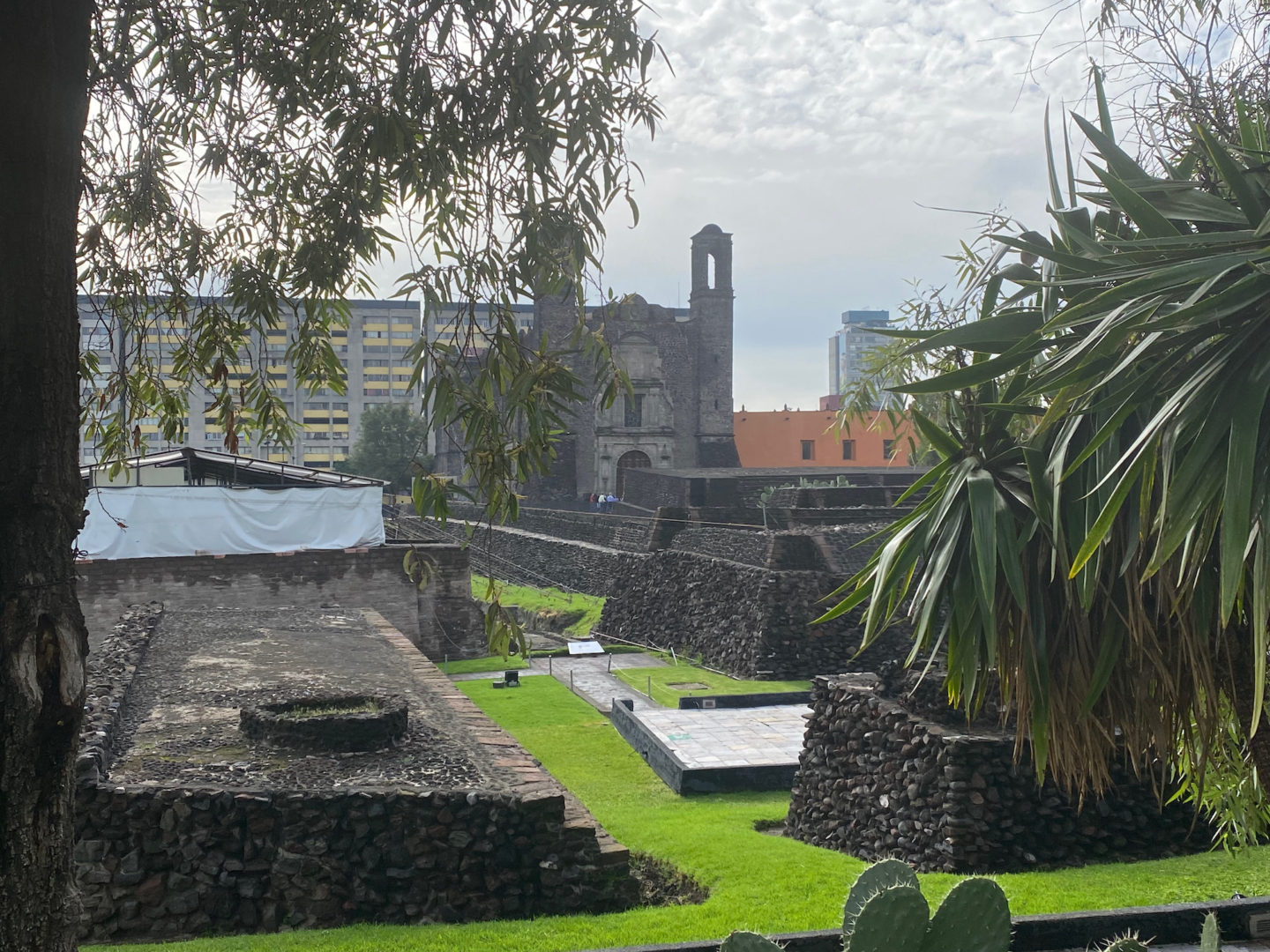
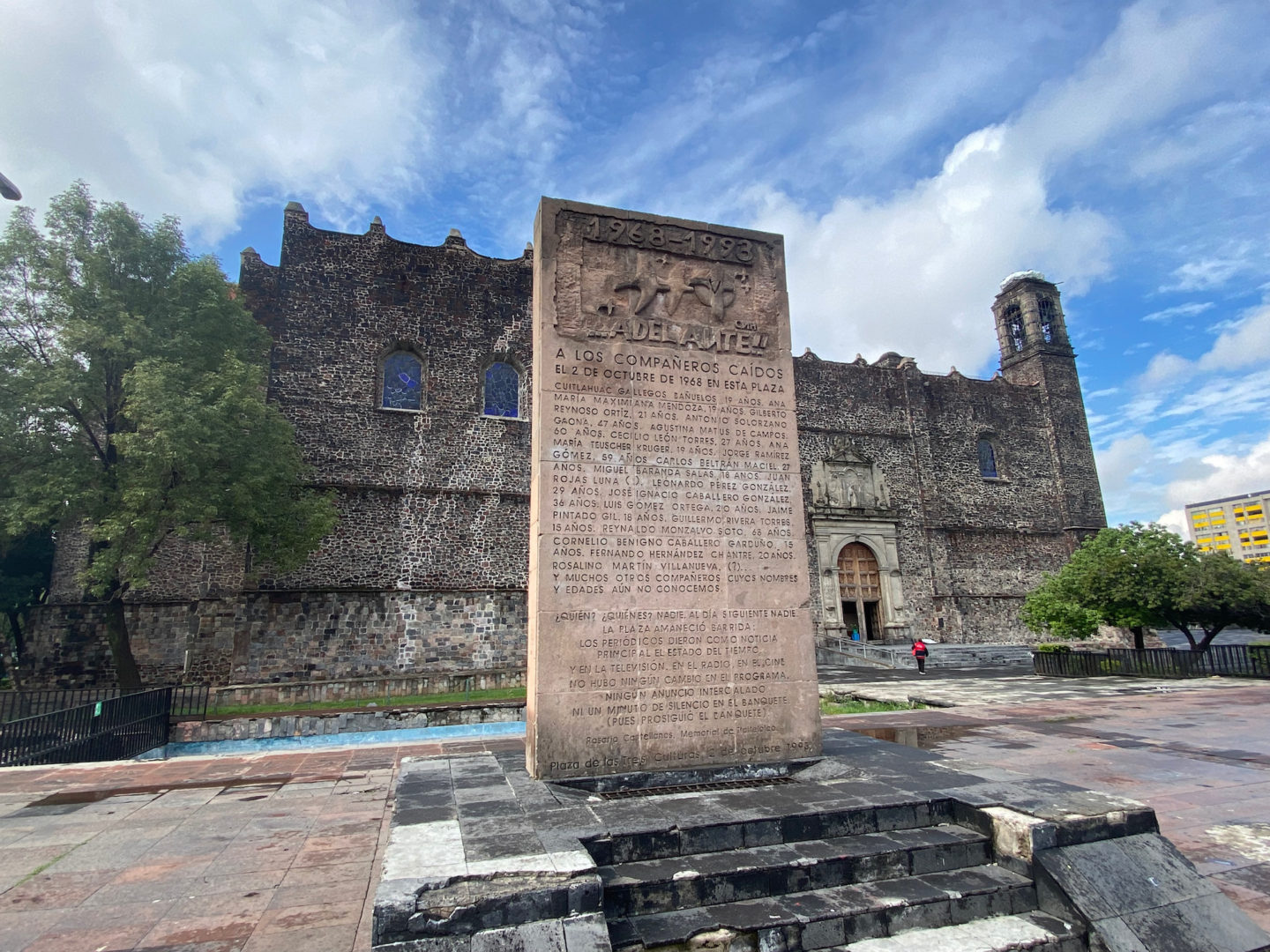
Shrine of Our Lady of Guadalupe
Old and New Basilicas of Our Lady of Guadalupe
The Virgin of Gaudalupe is a religious and national icon and located right here in Mexico City is the sacredShrine of Our Lady of Guadalupe where pilgrims annually converge on the 12th of December. Located on Tepeyac Hill, this site commemorates the appearance of the Virgin Mary to Juan Diego in 1531, that led to his conversion the directive to build a basilica on this site. The venerated image of the Virgin, believed to have miraculously appeared on the cloak of Juan Diego hangs in the New Basilica on one side of the plaza where the Old Basilica precariously stands on a slant as it is slowly sinking into its unstable foundation.
In addition to the Old and New Basilicas, just beyond the main square is a small chapel, a Baptistry, amazing grounds with a larger-than-lifesize sculptural reenactment of the Virgin’s appearance too Juan Diego and a hillside path leading up to another church overlooking the city. Although it may seem like a lot to see in one location, an hour is more than enough time to see everything if this is a stop along the way toTeotihuacan.
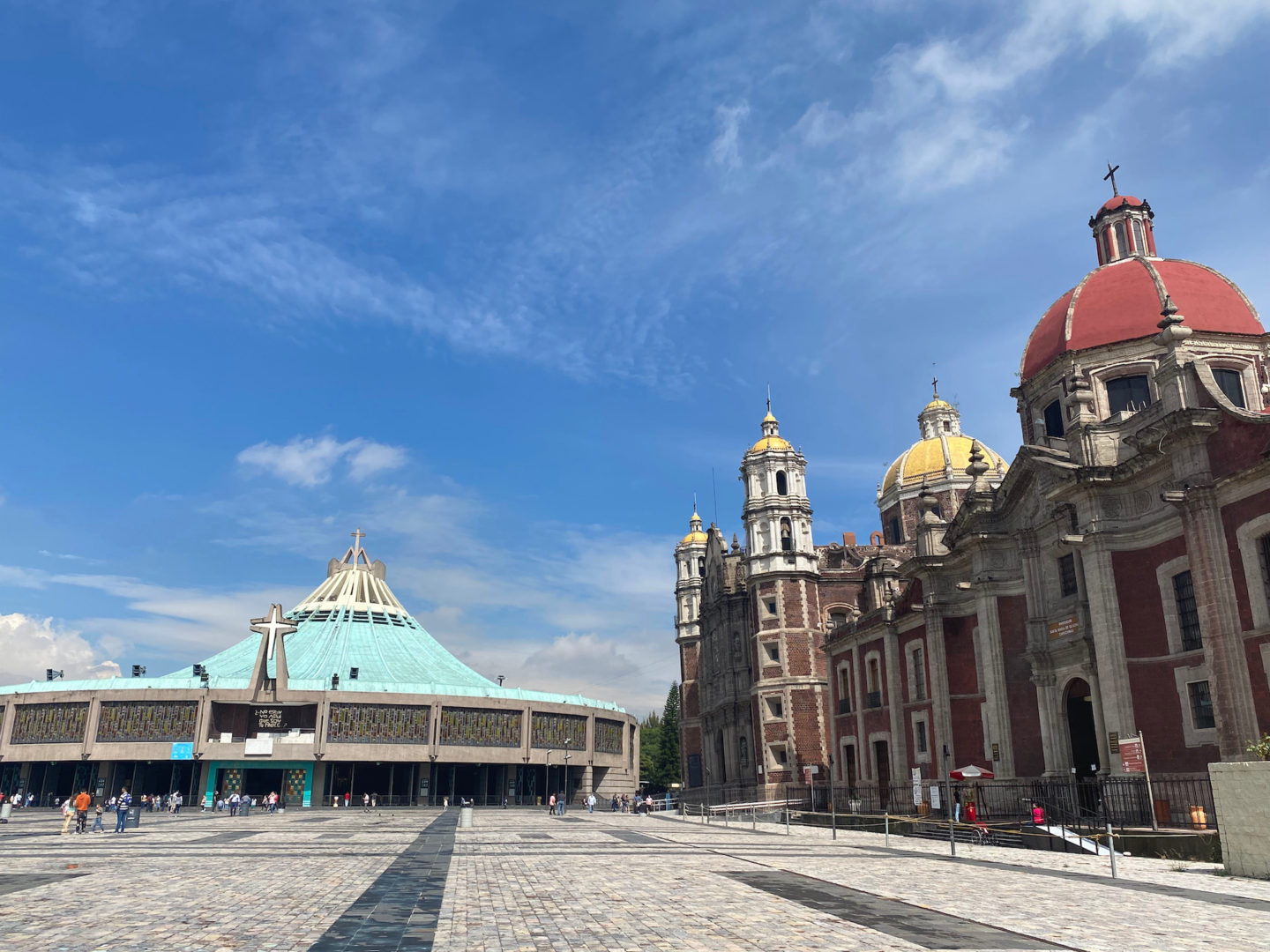
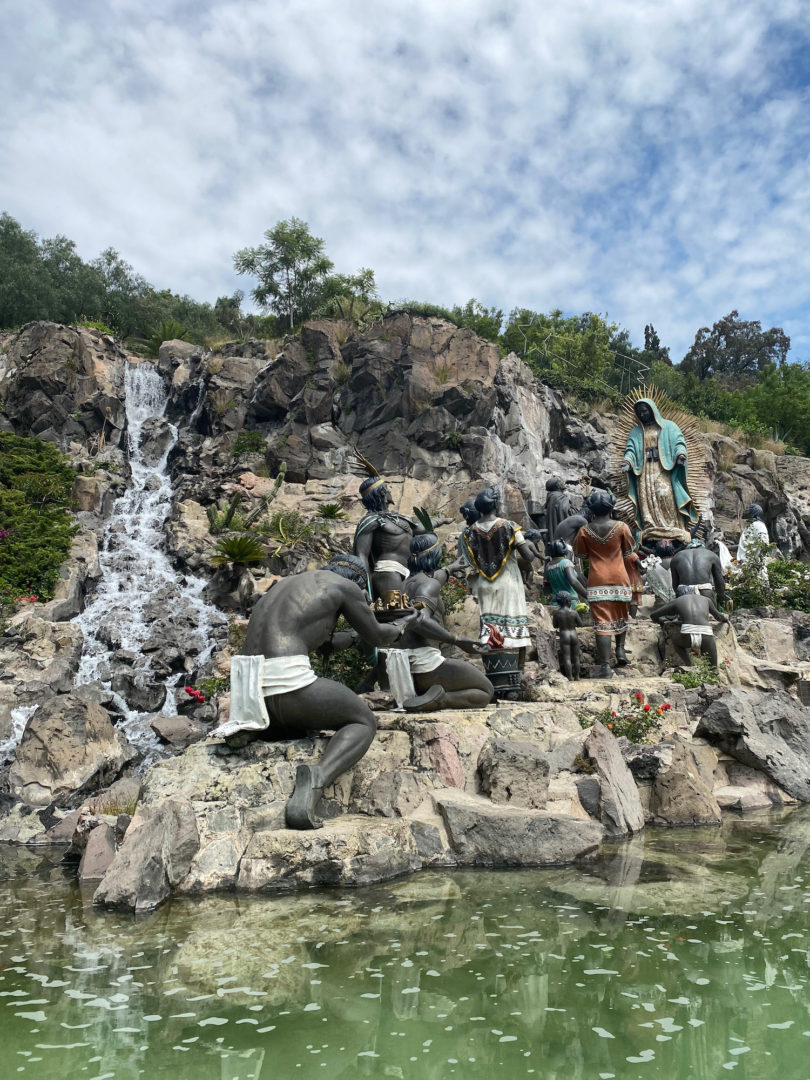

Teotihuacan
The ancient city of Teotihuacan, also know as the Place Where the Gods Were Created is an UNESCO World Heritage site located just beyond Mexico City. A visit to Mexico City is incomplete without an excursion to this city of pyramids. They can be reached a number of ways including public transportation, affordable shuttles, tour companies or with a private car. As mentioned above, if hiring a private car, it is possible to visitTlateloco, theShrine of Our Lady of Guadalupe and Teotihuacan in one day.
This city is believed to have been most active between the 1st and 7th centuries AD. Teotihuacan is organized around a central throughway, The Avenue of the Dead, and marked at either end by the Pyramids of the Sun and the Moon, and the Temple of Quetzalcoatl (also known as Temple of the Plumed Serpent) and other smaller stepped pyramids along the way. This monumental ancient city is absolutely breathtaking to experience in person.
There are places to eat around the site but avoid the restaurant in the cave, La Gruta Restaurant, because it is a tourist trap. It is also an active cave for bats and as our driver pointed out, bat droppings are part of this restaurant’s charm, or lack thereof.
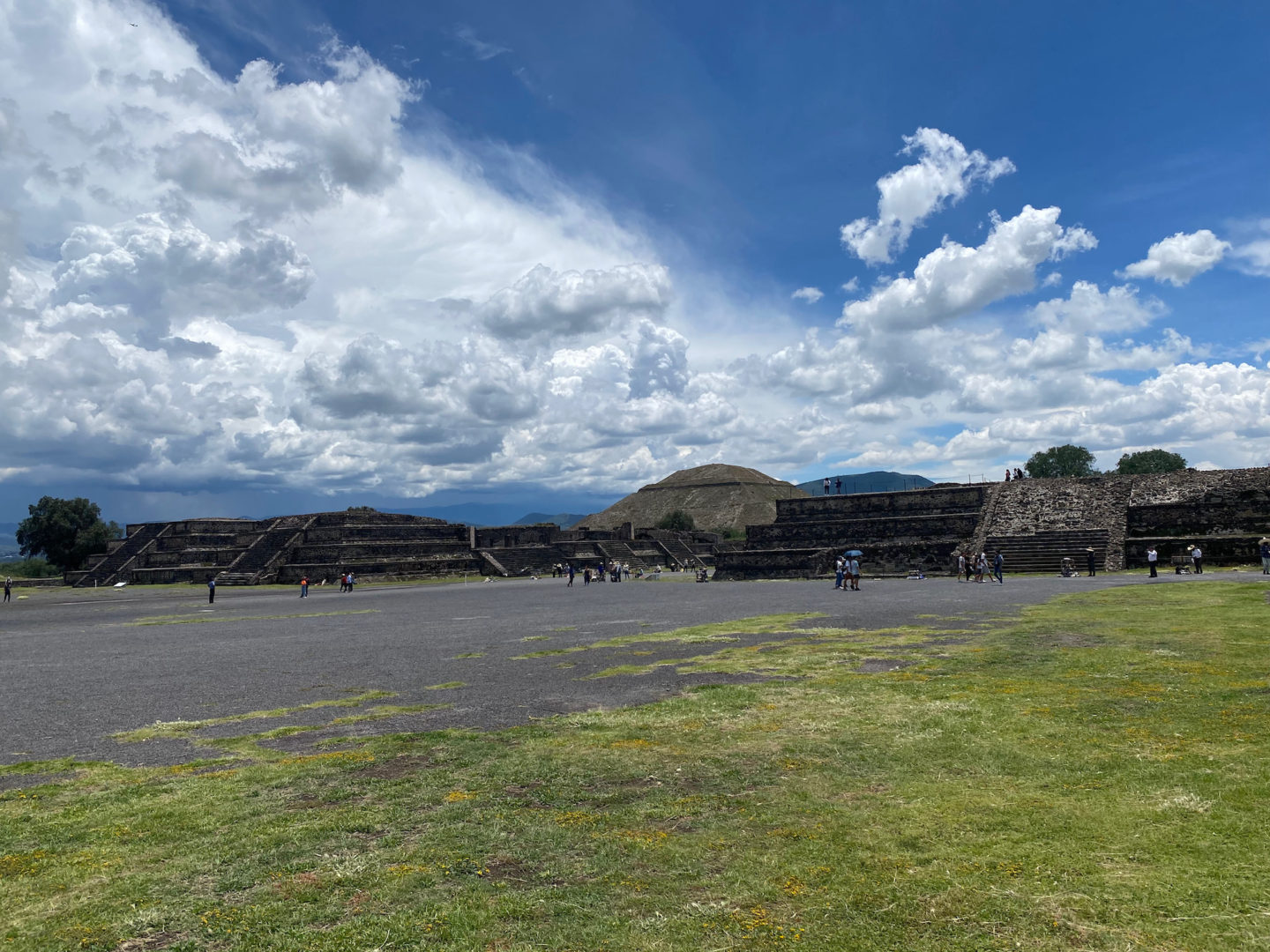
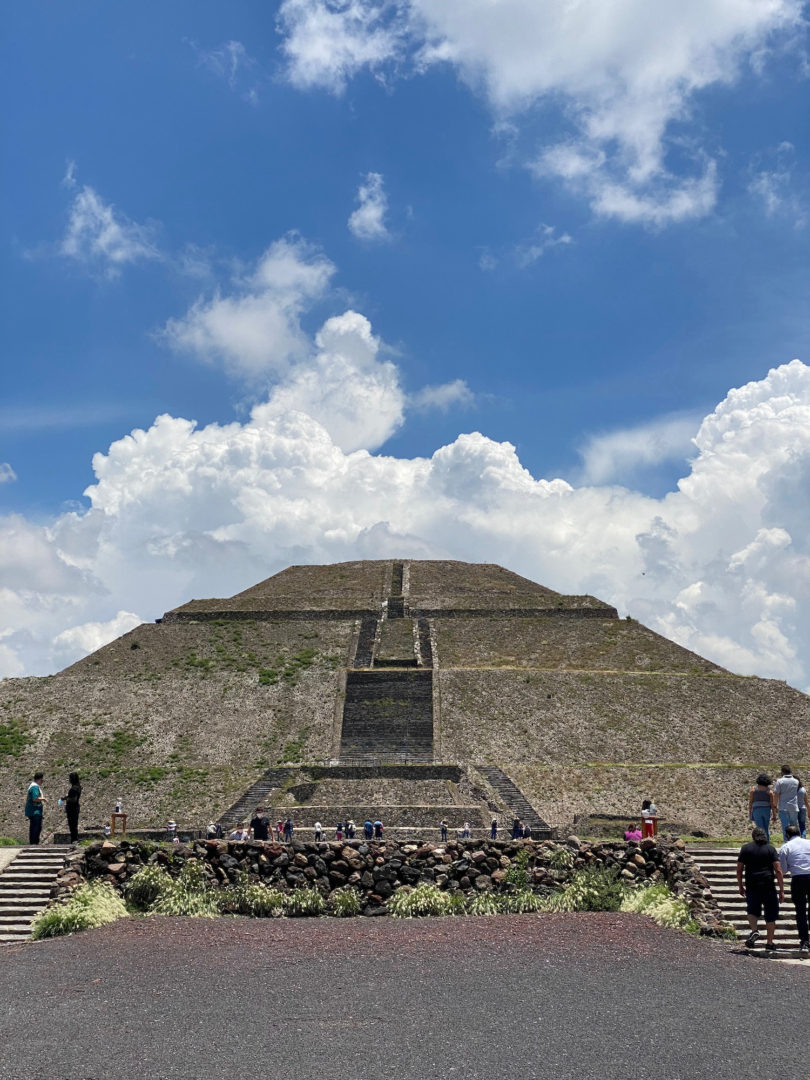
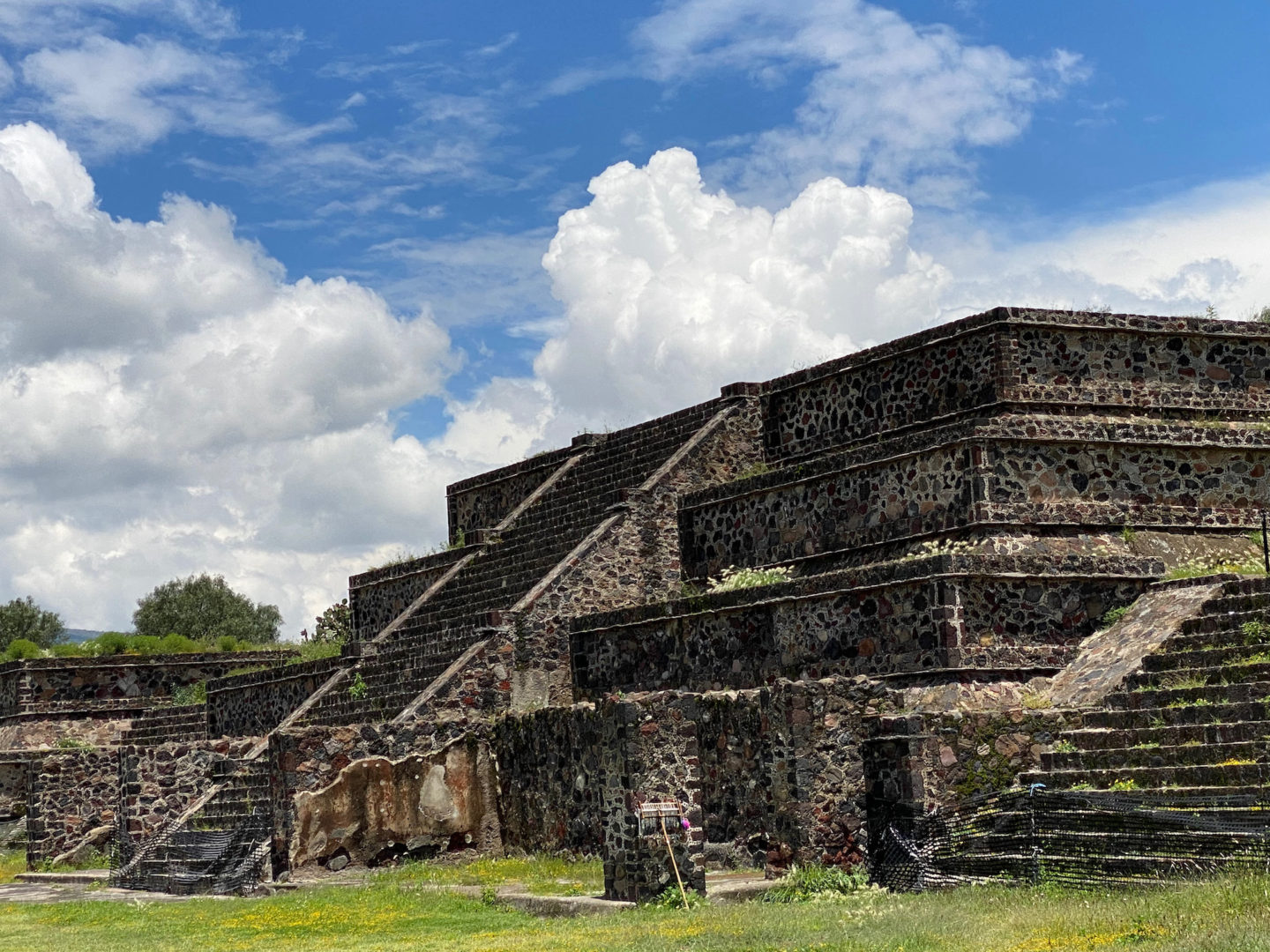
Getting Around
Public transportation is an option for getting around Mexico City but on this most recent trip with the kids, we mainly used Ubers. They are surprisingly cheap in comparison to NYC rates, convenient and most importantly safe to use as a means for getting around locally. We did not experience any problematic situations but the rule of thumb is to request Ubers while standing in front of a restaurant or a well-populated location. We only used a private car for the airport and the first day of sightseeing toTlateloco, theShrine of Our Lady of Guadalupe andTeotihuacan. If you are staying at a hotel, the concierge can most likely put you in touch with a driver. Taxis are around but unreliable and more expensive than Uber.
Eating in Mexico City
Delicious food options that accommodate any budget are everywhere. Some of the places we tried simply blew our minds when it came down to the food while others were excelled in their choice of beautiful surroundings and stunning views. From tacos stands to churros, Mexico City is a foodie’s dream come true. These are just few places that stood out during our stay.
Centro Histórico –Cafe De Tacuba, El Cardenal,El Moro Churrerias &Taqueria Los Cocuyos (Taqueria Los Cocuyos – Calle de Bolívar 57, Centro Histórico de la Cdad. de México, Centro, Cuauhtémoc, 06000). Some restaurants such as El Mayor and La Casa De Las Sirenas offer excellent views overlooking the Zócalo and good customer service but the food was not memorable.
Condesa –Contramar andAzul Condesa. We loved Contramar so much that we had dinner there two times during our stay and cannot wait to return. There are so many memorable dishes at Contramar as there are at Azul Condesa. Both restaurants accommodated our kids, one who is a vegetarian and the other a slightly picky eight-year-old.
Tlalpan –Arroyo Restaurant. This restaurant is out of the way and pretty far from the city center but it is a full-blown and festive experience from the decor to the Mariachi bands performing on stages in a massive space with banquet-sized dining areas plus a play area for the kids. Even though this restaurant is slightly out of the way and kind feels like an amusement park given that there is a bullfighting ring on the property, it is a great place to eat on your way back from Xochimilco or a day spent inCoyoacán visiting Frida Kahlo’s house,Museo Anahuacalli and/or the nearby campus of UNAM to see the colossal murals ofJuan O’Gorman.

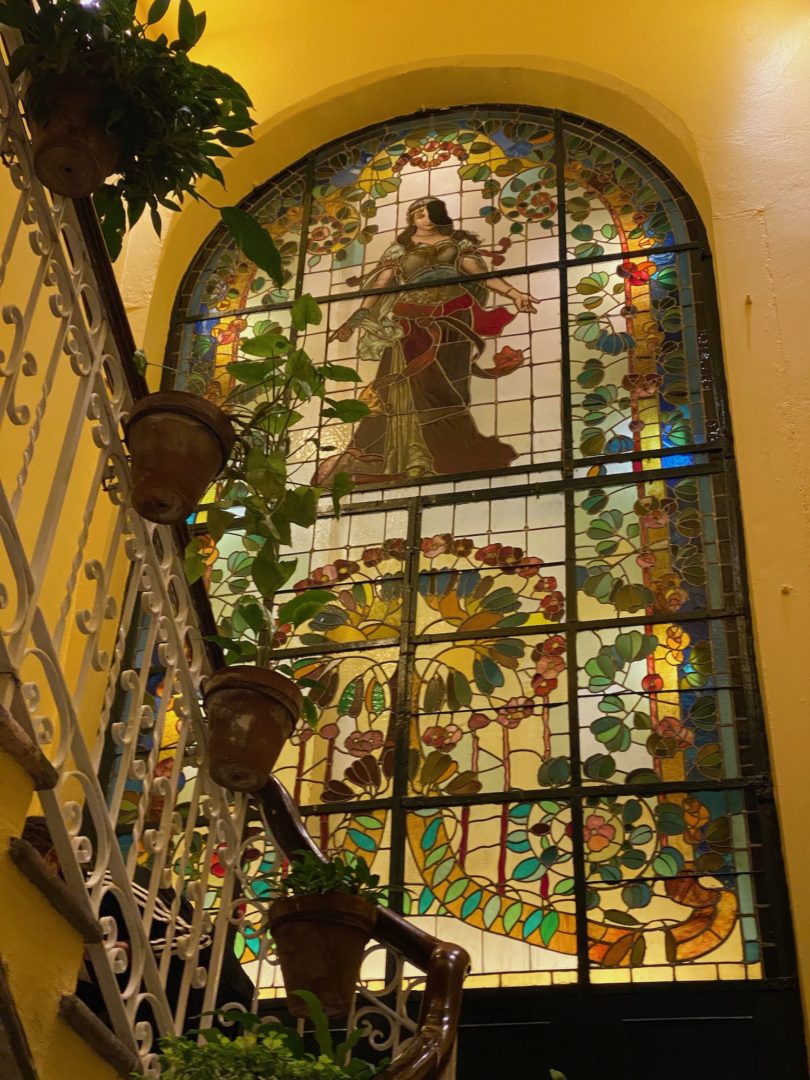
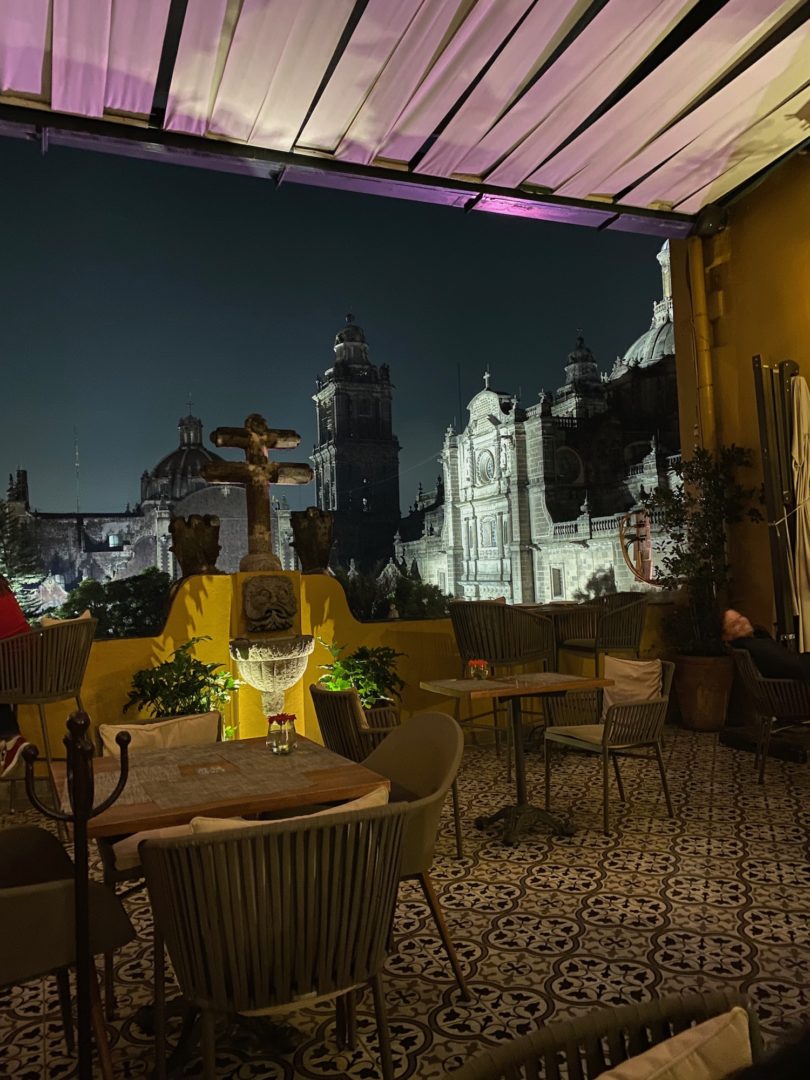
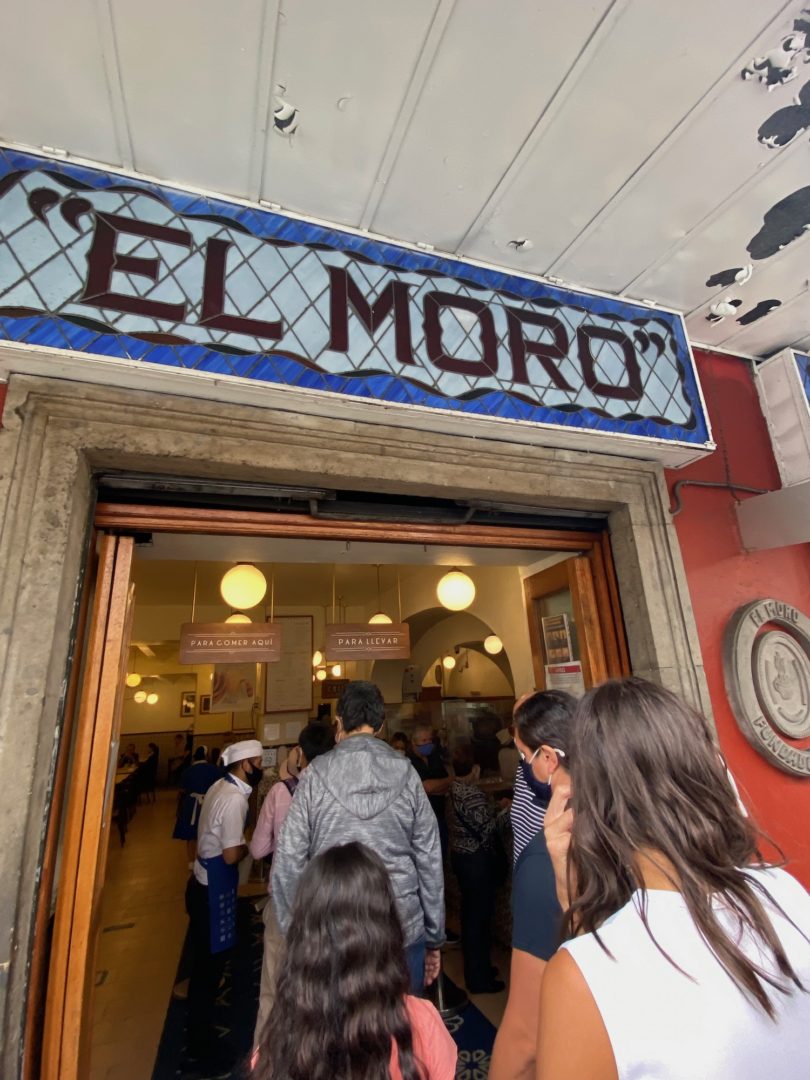
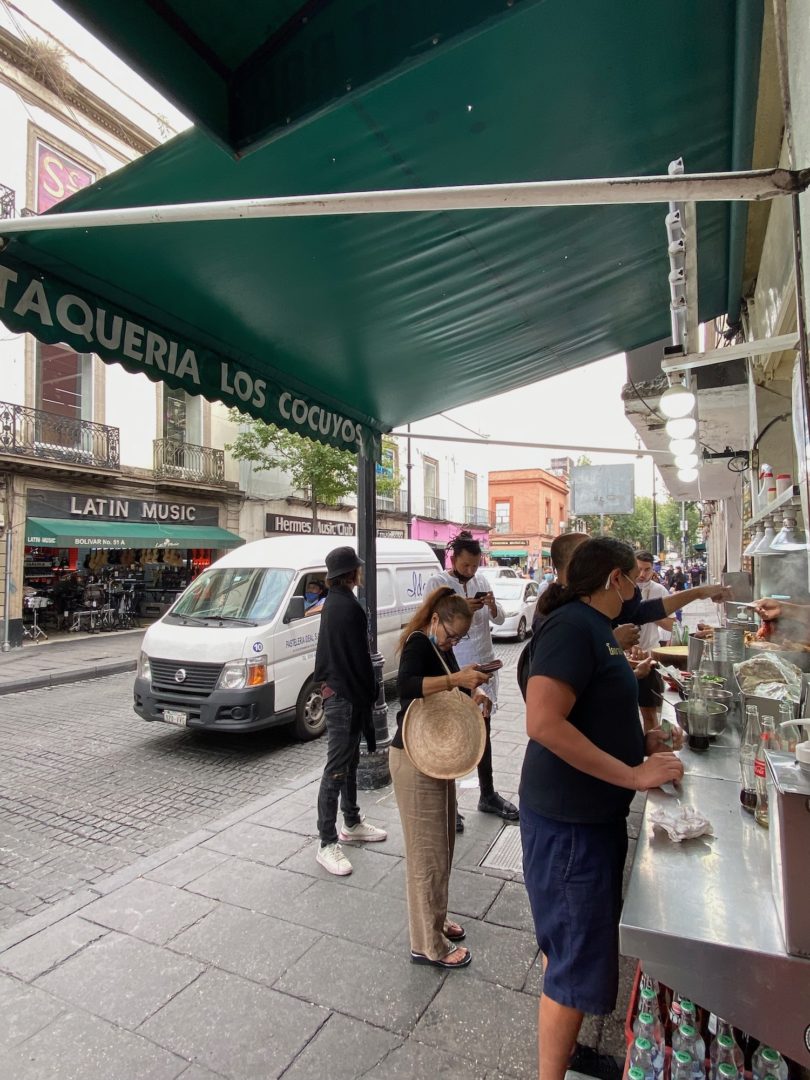
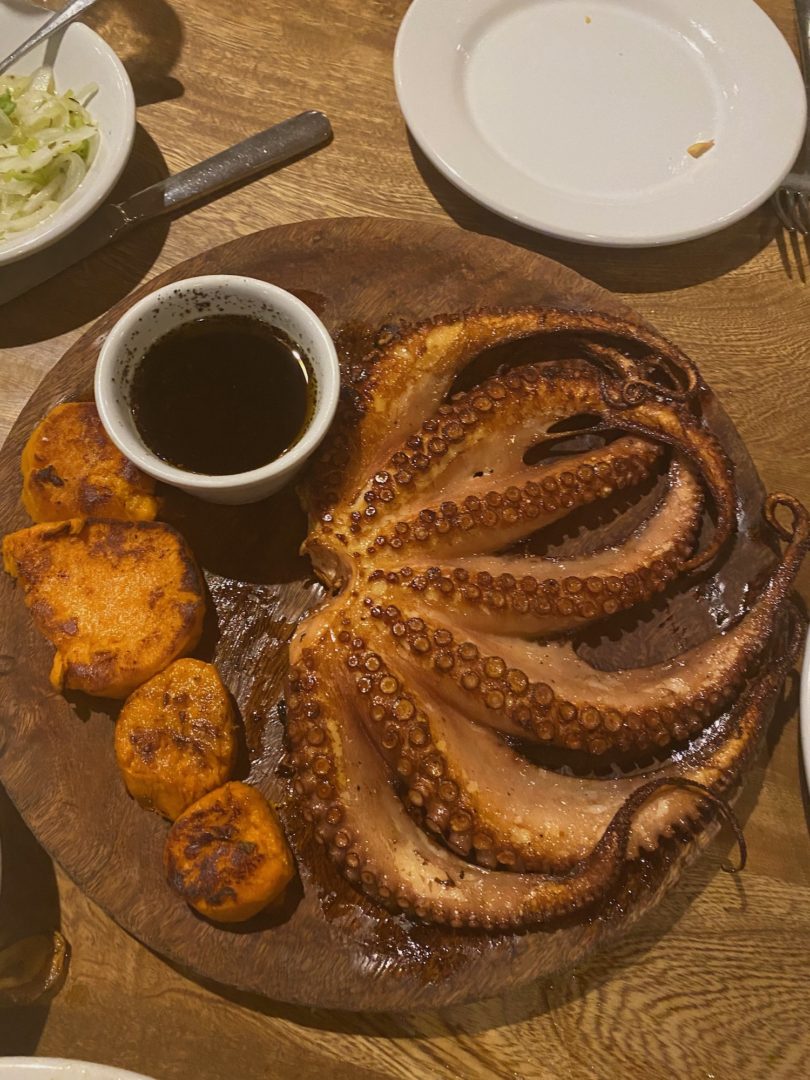
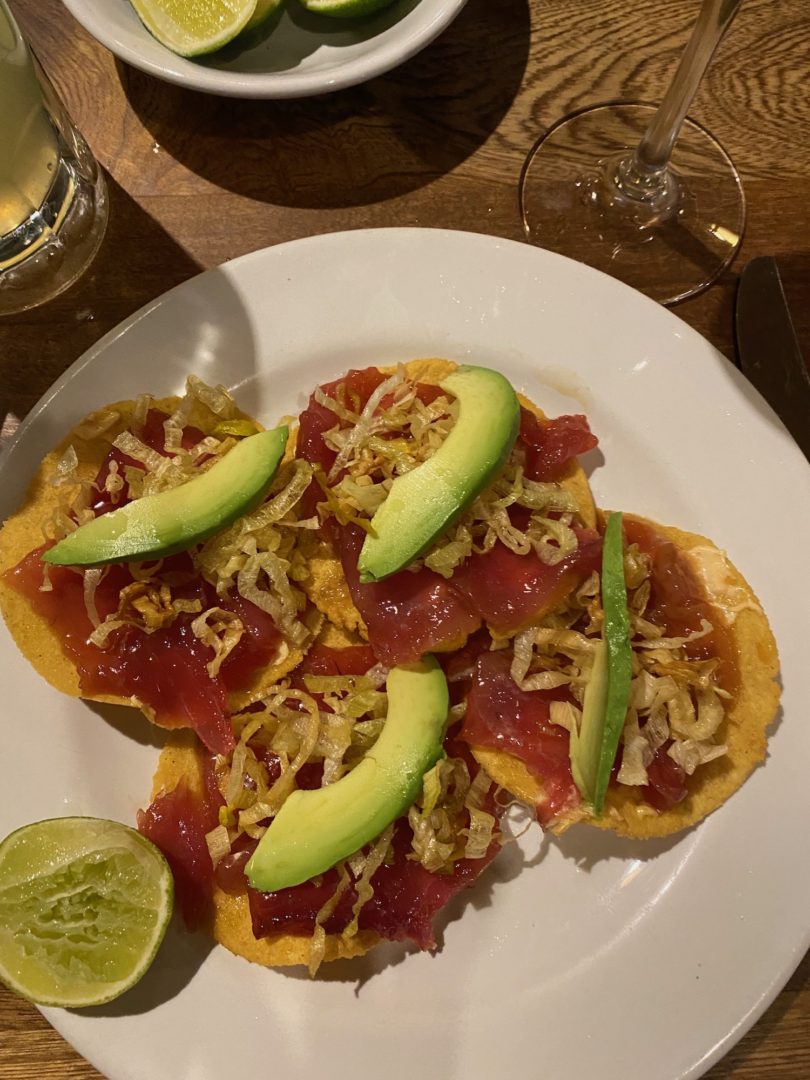
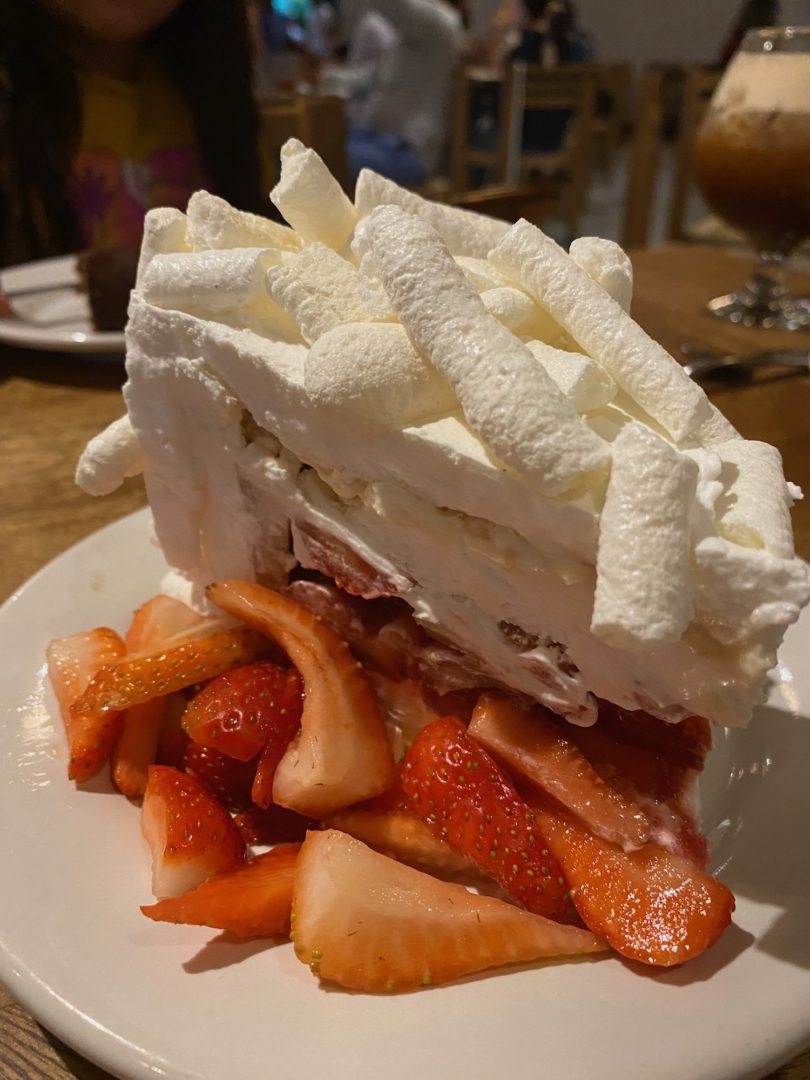
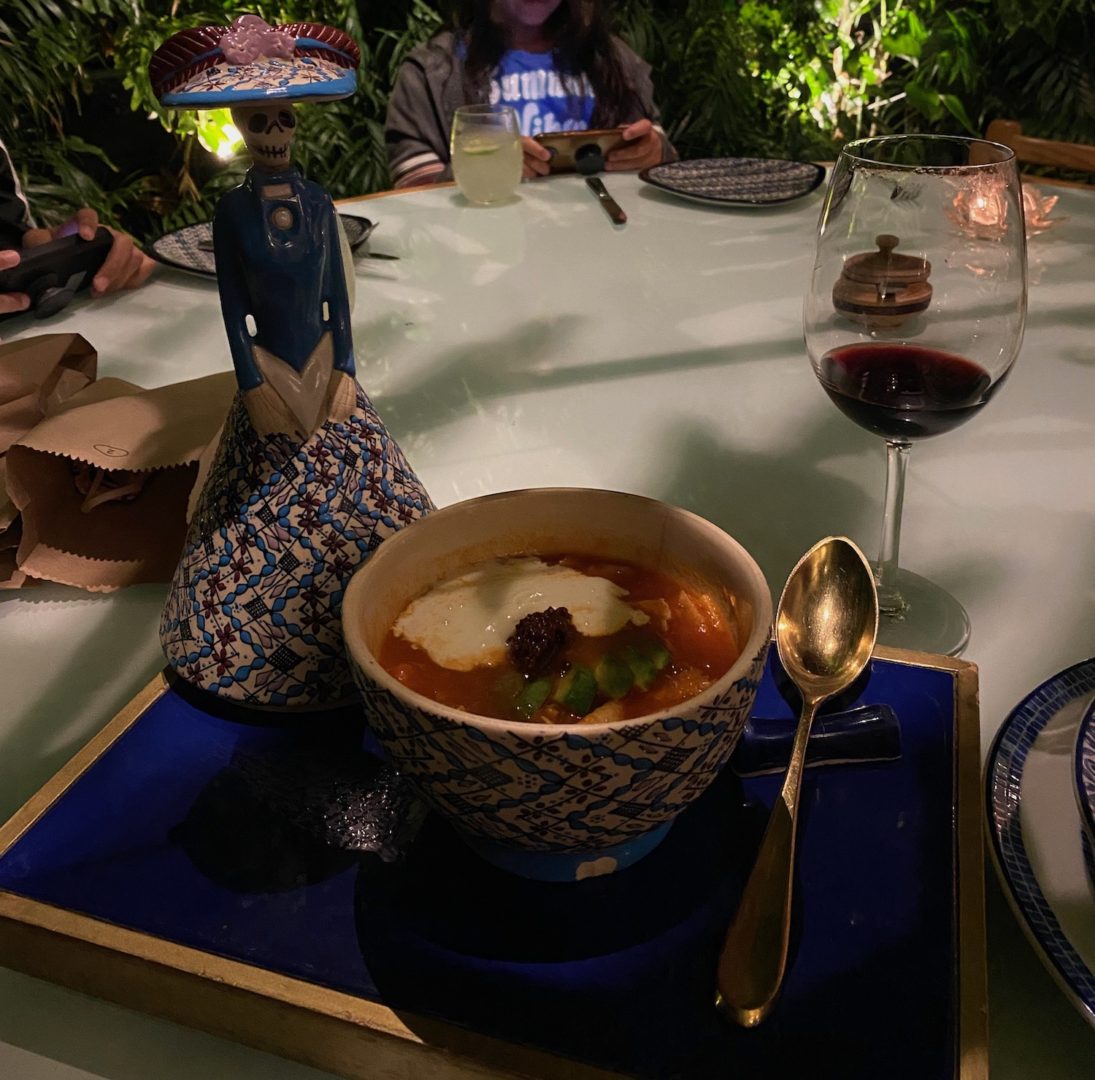

Good Night Mexico City
I have yet to try Airbnb and although it has become a go-to alternative for vacationers, I honestly do not see the appeal and prefer to stay in hotels. We find comfort in the extra security, cleanliness and predictability of a hotel. Safety is top priority and even though we have nothing but love for Mexico City, we are not naive and wanted to make sure that we stayed in a hotel where we would feel secure with the kids. This trip was booked during the pandemic amid a period of instability for the hospitality industry that was feeling the setbacks of travel closures. Thus, we secured some ridiculously low rates for a luxurious stay at theFour Seasons Hotel Mexico City. The stay, the family suite, the service, the security, everything was absolute perfection.
Upon check-in at the Four Seasons Hotel Mexico City, we were informed that the hotel had to move us into a family suite, a room that was significantly bigger that the room we had originally book. The reason for this move and welcomed upgrade was because the hotel was hosting a concert in its courtyard featuring Alejandro Fernández, to celebrate Mexico City in response to the hardships endured throughout the pandemic. Such celebrations were happening around the world around this time and we happened to be in the right place at the right time. In addition to staying in a lush family suite, we were invited to watch the concert from one of the many places overlooking the courtyard and enjoy a lavish spread of food and drinks. It was a magical evening watching a Mexican musical legend perform in our hotel.
In addition to this unexpected perks that came with the concert, the customer service at the hotel was top notch and the staff went out of their way to accommodate every need. The room was prepared to welcome a family including teddy bears for the children, robes for adults and children, televisions that allowed us to stream from our devices, a television in the bathroom mirror, scented toilet paper, bath tub and shower stall, a hamper for dirty laundry, extra padding on the pull-out bed as well as housekeeping services two times a day. The common spaces throughout are stunning, including the iconic courtyard filled with greenery and surrounded by high-end shop, plus a small pool on the third floor balcony that was enjoyed by the kids and an ATM on the premises that made it safe and easy to get cash.
The driver that the Four Seasons Mexico City sent to bring us from the airport was well-informed and friendly, so much so that we booked him to take us to Tlatelolco, Shrine of Our Lady of Guadalupe & Teotihuacan. We stayed in touch with this driver who drove us to and from Puebla de Zaragoza when we returned in April 2022.
Overall, our stay at the Four Seasons Mexico City was flawless and I would absolutely recommend this hotel as a place to stay. Mexico City is a very large city and one must rely on public transportation, taxis or Uber to move around the different neighborhoods. While the Four Seasons Mexico City is close to the trendy Condesa neighborhood and walking distance to Bosque de Chapultepec, it was necessary to use Ubers to take us to the historical zone around the Zócalo where there is a concentration of important sites and more. Aside from its location, I would happily return this hotel in the future. There are plenty of safe and affordable hotel options in Mexico City depending on one’s budget. I personally rely on Hotels.com to find our hotels and was able to snag another deal for our second visit to Mexico City. In a later post, I talk more about our stay in a family suite at Gran Hotel Ciudad De Mexico overlooking theZócalo.
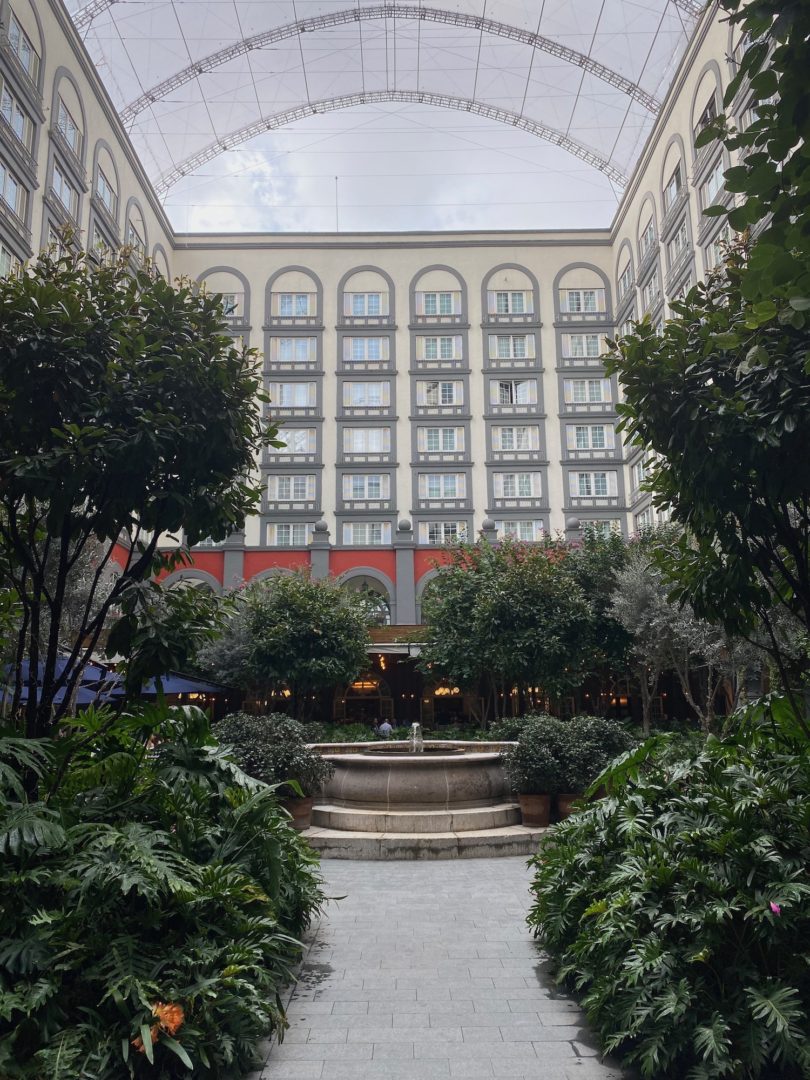
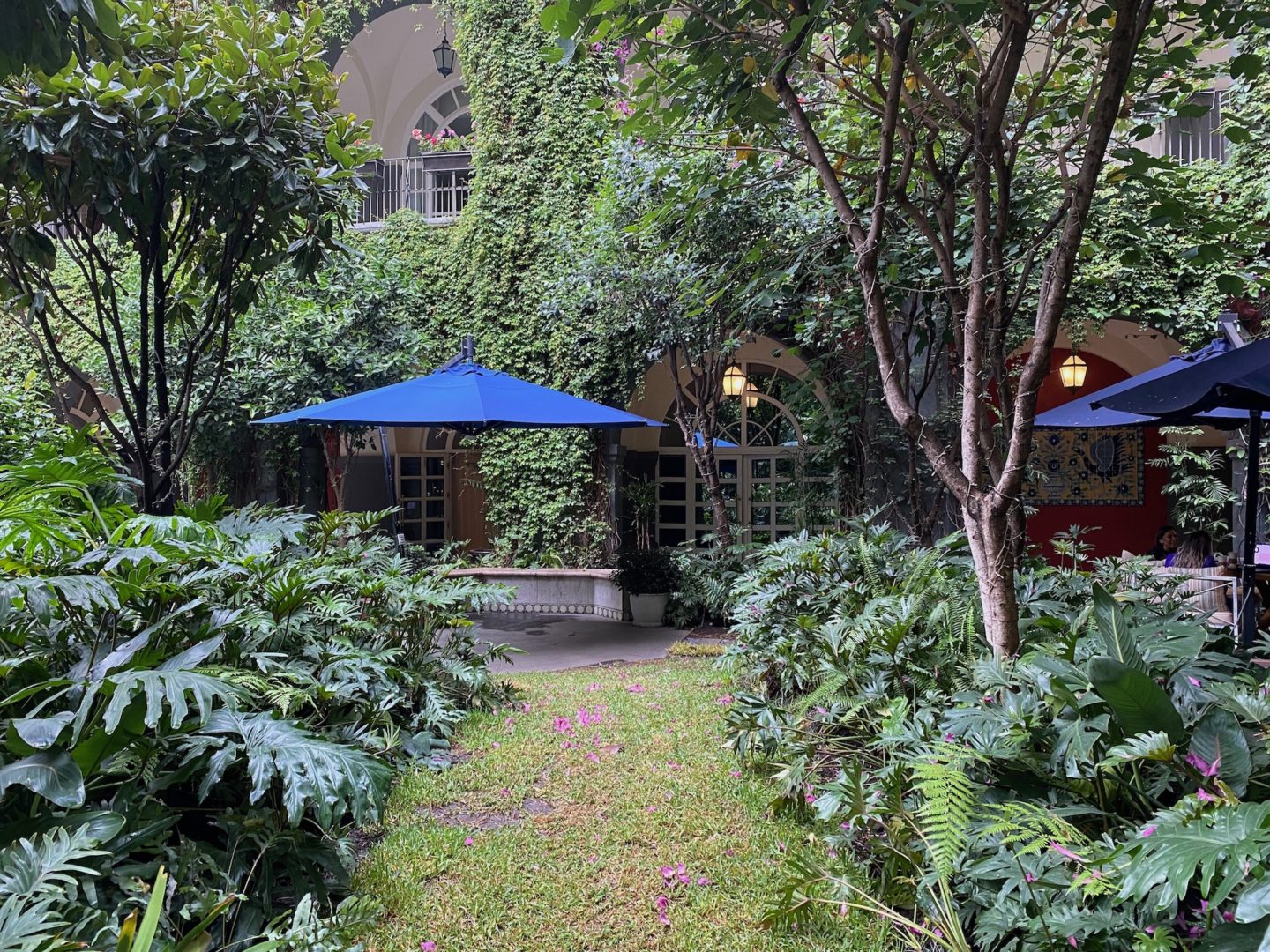
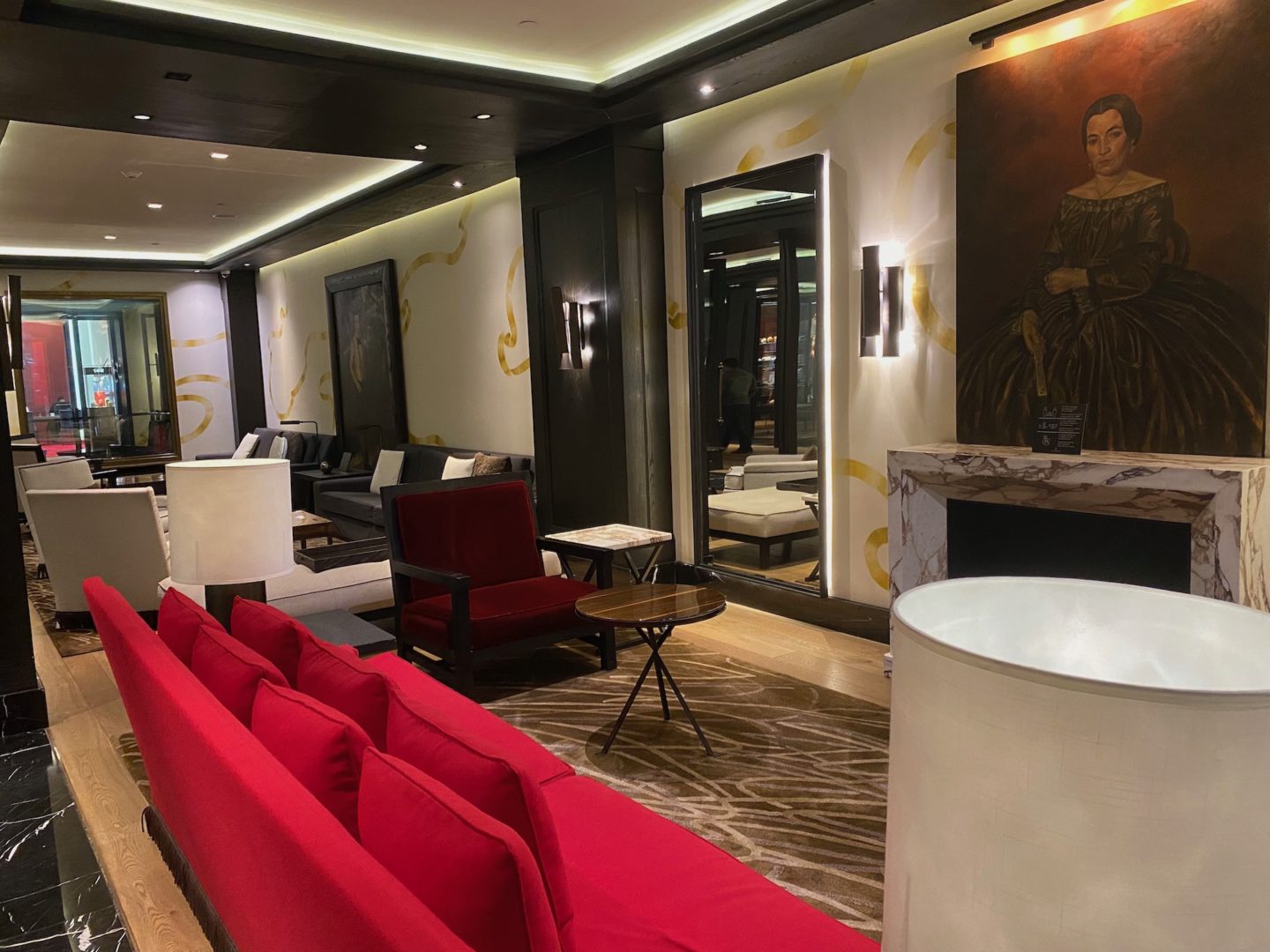
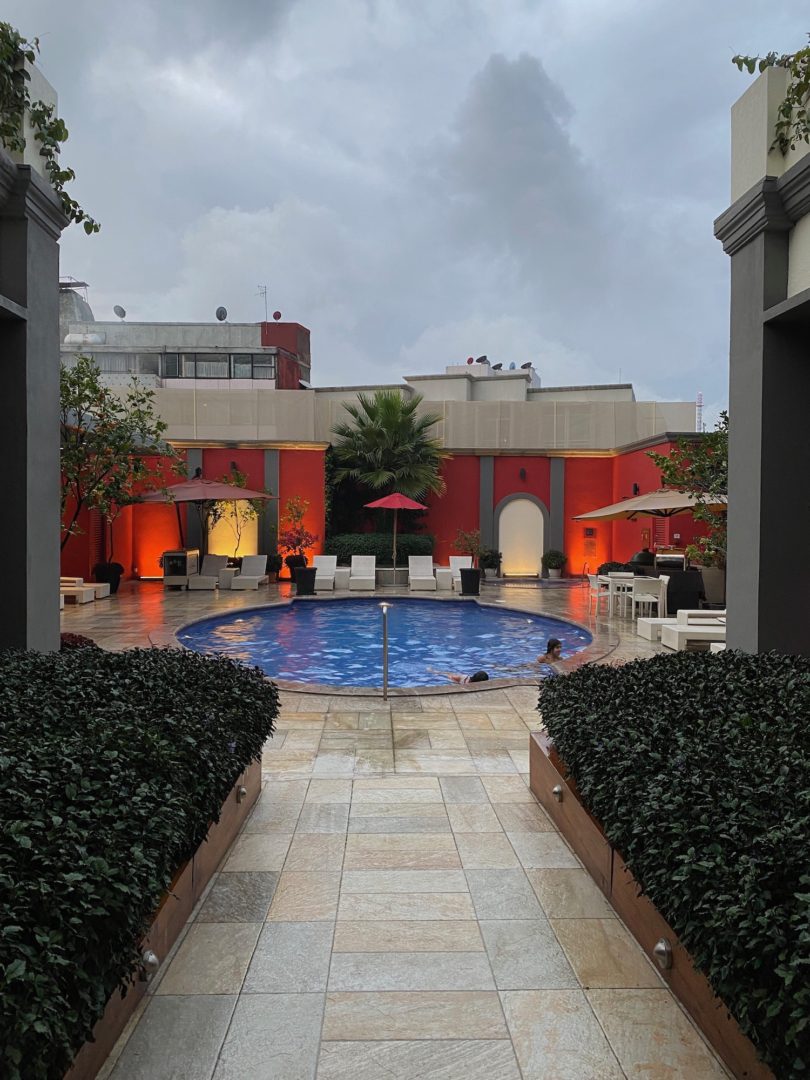
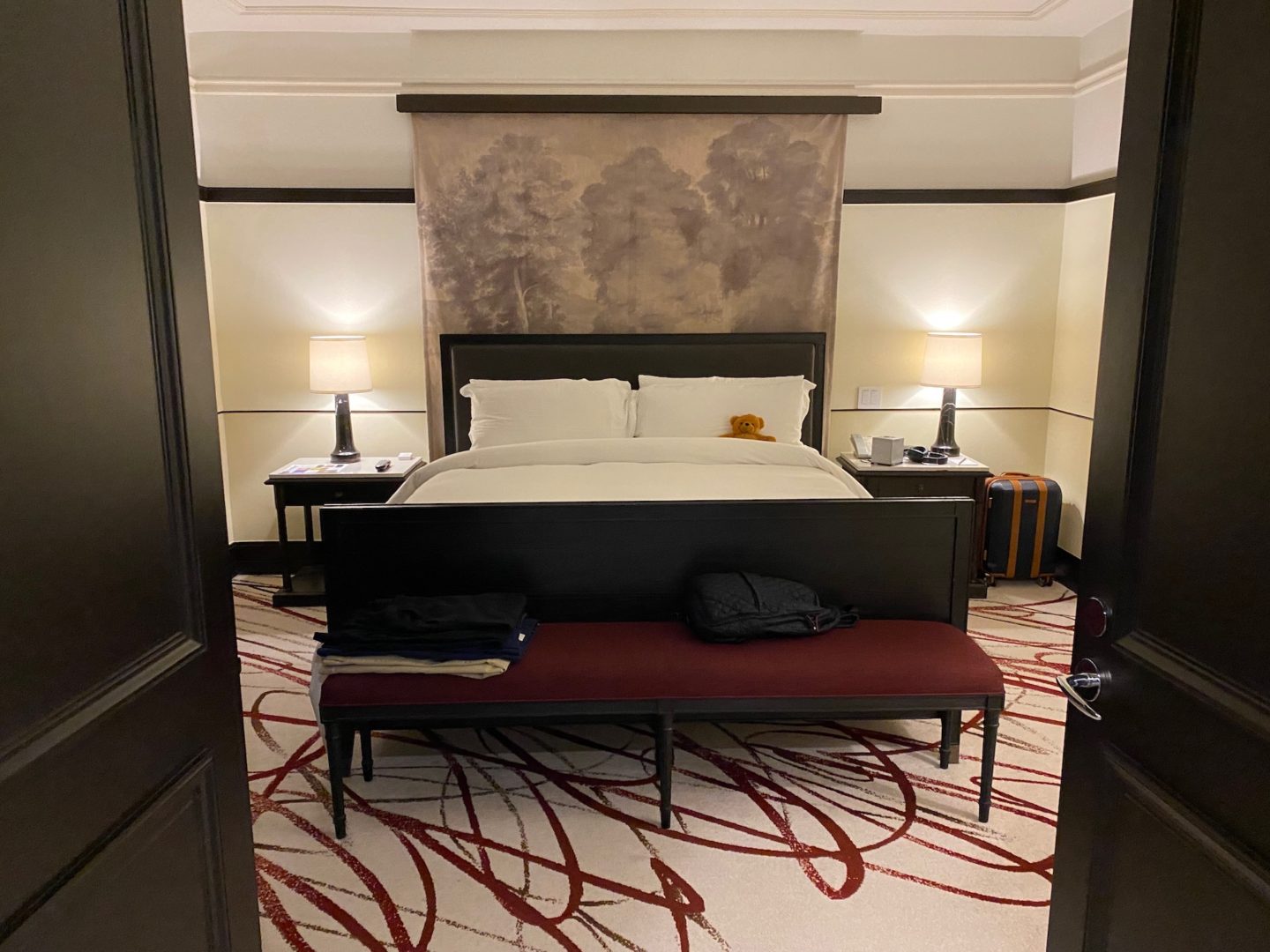
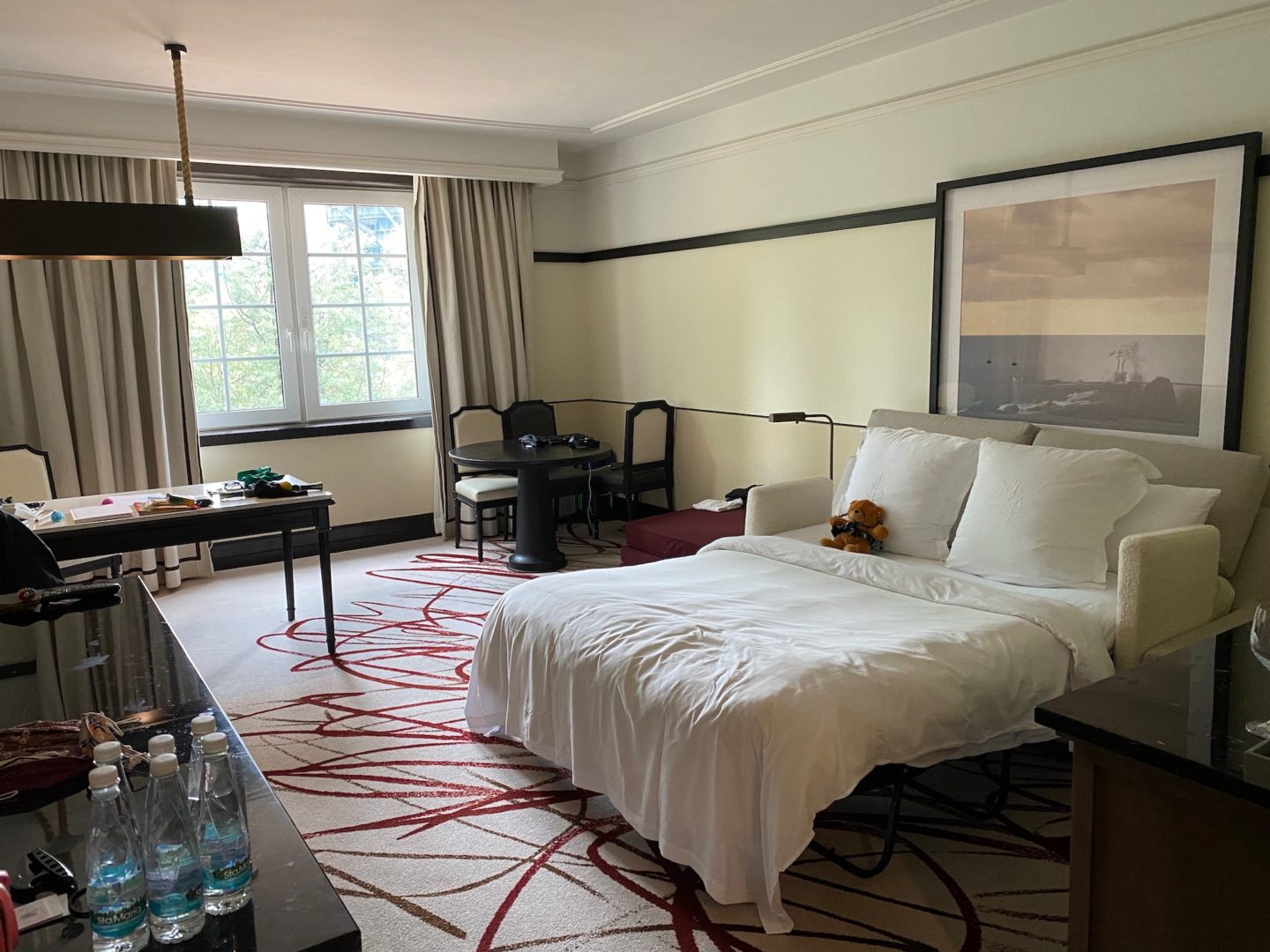
Mexico City – Part 2
For more about family travel, local and abroad, click here.
For more posts about art around New York City and abroad click here.
Click here if you are looking for a little guidance planning your next vacation.





